The 100 best science photos of 2020
Science isn't always cerebral, oftentimes revealing its intricacies with a striking image. And 2020 revealed some science gems that were both stunning and awe-inspiring. From "naked" sharks to secret galaxy mergers to disco tardigrades and more, a trove of incredible science photos came to light this crazy year.
Seal ballet

The Underwater Photographer of the Year contest celebrates stunning photos captured in oceans, lakes and rivers around the world, and this year's entries were no exception. The competition's top prize went to French photographer Greg Lecoeur; he dove deep in waters near Antarctica to find a group of crabeater seals cavorting in a blue-tinged, otherworldly scene under an iceberg.
Inside the 'Pillars of Creation'
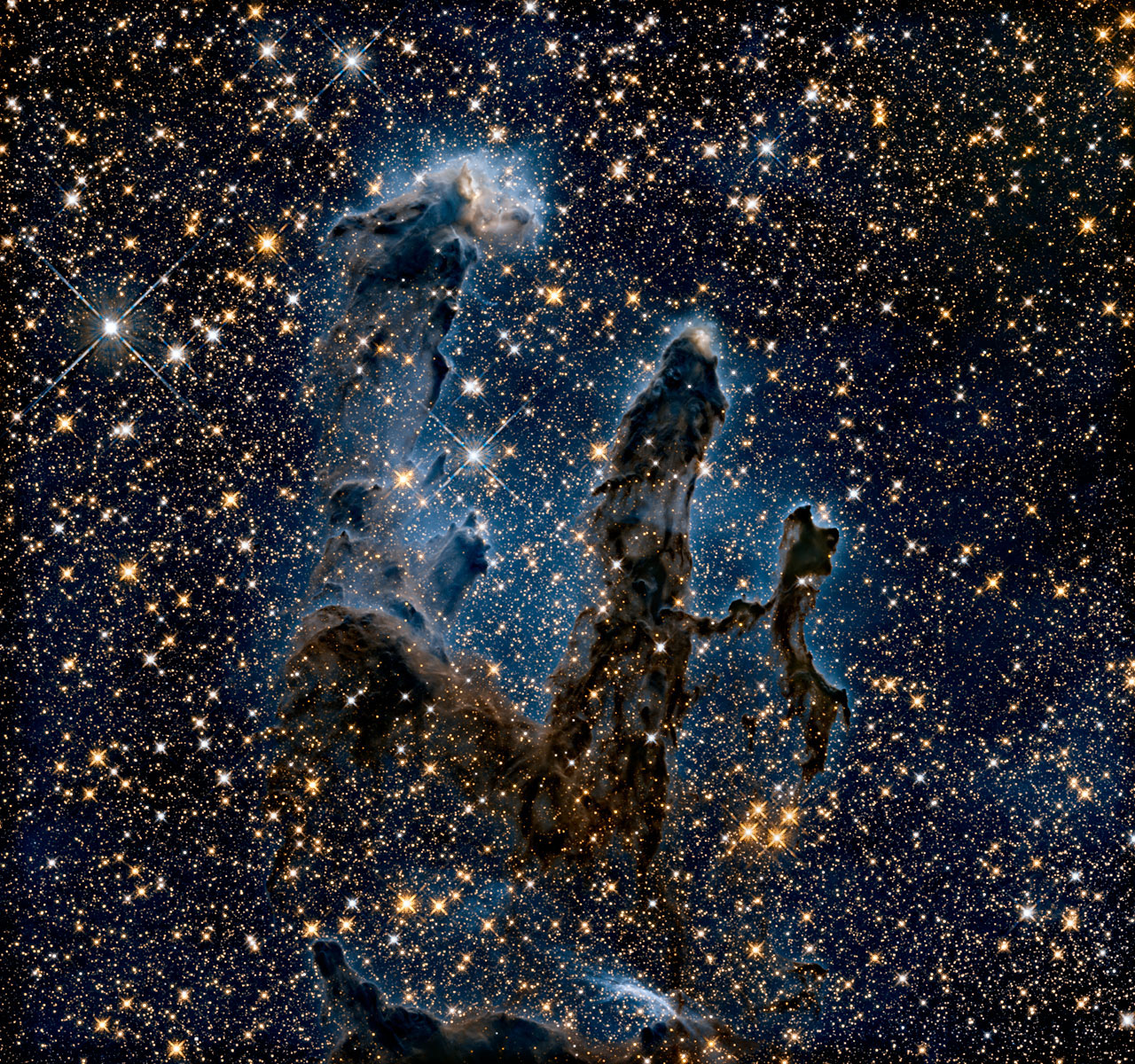
The "Pillars of Creation" are a vast region of star-forming material located in the Eagle Nebula, about 6,000 light-years from Earth. These tendrils of gas and dust, made colorful by the radiation of bright young stars smoldering within, became a Milky Way landmark thanks to an iconic visible-light image taken by the Hubble Space Telescope in 1995. This year, NASA scientists shared a new view of the pillars, focusing instead on the infrared radiation normally invisible to human eyes. In the new infrared image (also taken by Hubble), the colorful pillars fade to ghosts of their former selves, revealing a kaleidoscope of newborn stars within the dust.
The disco tardigrade

In a contest celebrating microscopy — images of organisms that are too small to see with the naked eye — one of the top prizes went to a colorful photo showing the inner organs of a tardigrade, illuminated with fluorescent dyes. Because tardigrades are mostly colorless, photographer Tagide deCarvalho, director of the Keith R. Porter Imaging Facility at The University of Maryland, Baltimore County (UMBC), used stains to highlight tiny structures making up the microorganism's digestive system, "including the mouthparts and stomach filled with food," she said.
Storytime for otters
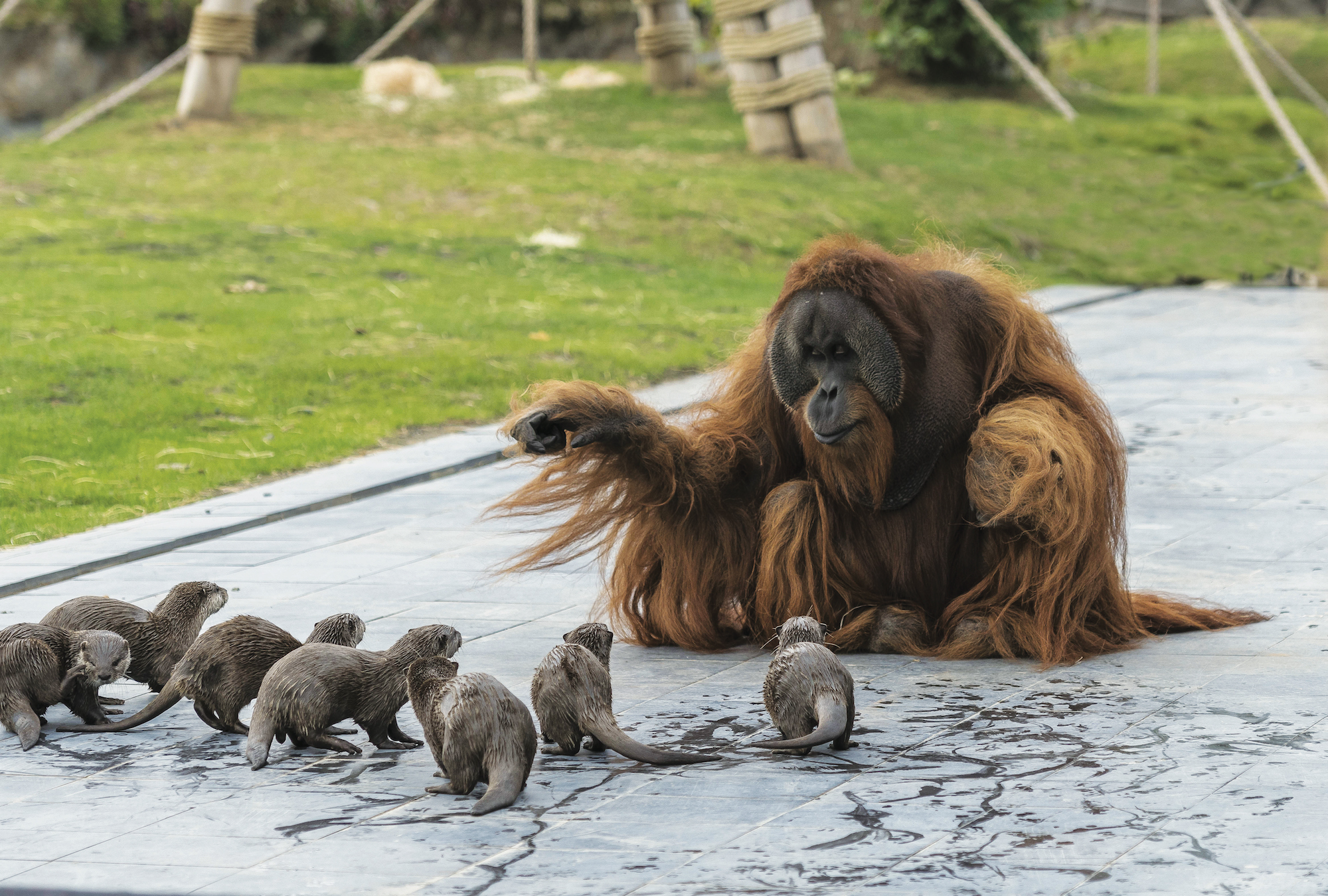
A family of orangutans and a romp of river otters are the furriest of friends, according to zookeepers in Belgium who purposefully arranged for the primates' and mustelids' habitats to intersect. Photos of these curious bedfellows went viral after Pairi Daiza, a privately owned zoo and botanical garden located in Belgium's province of Hainaut, recently posted them on Facebook.
Welcome to 'Silkhenge'

Remarkable, high-resolution new video has revealed a wild sight: a silk structure in the Amazon that resembles a monumental henge, though teensy, and hence its nickname "Silkhenge." Rather than human hands, spiders — whose identity has yet to be uncovered — crafted these web towers. New video captured in Peru shows tiny spiderlings breaking out of the structures; that suggests they serve as protective "fences" around spider egg sacs.
Volcanic lighting

Gorgeous displays of lightning lit up Taal volcano in the Philippines, as it shot ash and lava sky-high. Here, a column of ash surrounds the crater of Taal on Jan. 12, with lightning in the background, as seen from Tagaytay city. Scientists are still trying to nail down the exact causes of volcanic lightning, but they have some ideas. One is that static electricity, created as a result of particles rubbing together within dense ash clouds near the ground, produce the electric flashes.
Sign up for the Live Science daily newsletter now
Get the world’s most fascinating discoveries delivered straight to your inbox.
Solar caramel

In January, the world's largest telescope took the highest-resolution picture ever of our home star, and it looks just like caramel corn. The incredibly detailed image revealed details about the sun's roiling magnetic field that previously only showed up as tiny specks. This gorgeous image of the sun was captured with the Daniel K. Inouye Solar Telescope (DKIST), perched high on the Haleakala mountain on the Hawaiian island of Maui.
The spiky splendor of frog skulls
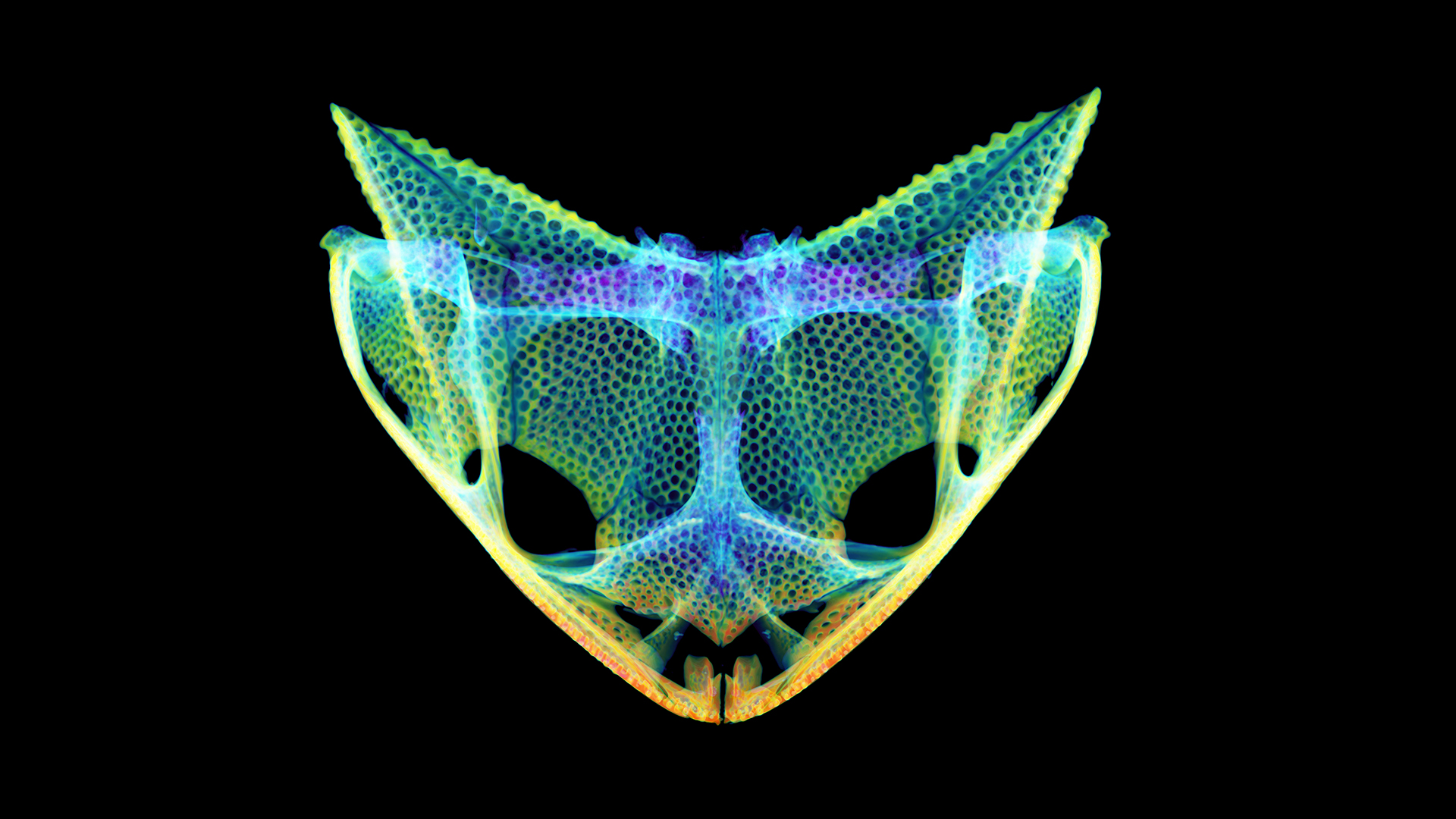
While most frogs have smooth, rounded skulls, a number of species have skulls that are pointy, spiky, extra-wide or shovel-shaped, and scientists recently captured amazing images that showcase this diversity. This year, researchers discovered that some of these unusual skull features appeared multiple times in different frog lineages, separated by millions of years of evolution.
The other side of Doomsday
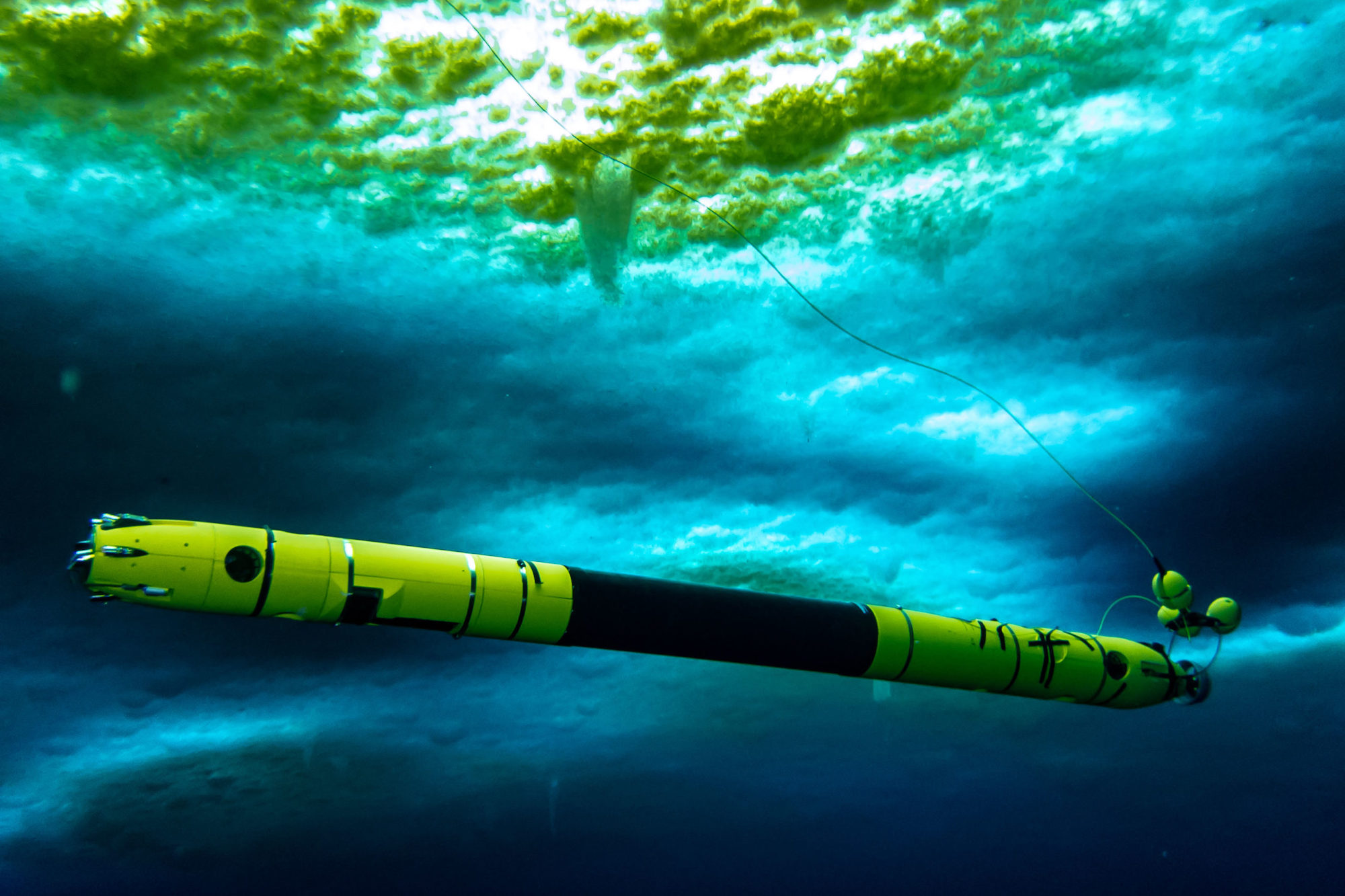
A torpedo-like robot named Icefin ventured to Antarctica's most dangerous glacier, and it found something extremely troubling. The Thwaites glacier, nicknamed the Doomsday glacier because it is melting so fast, is bathing its underbelly in a sea of surprisingly warm water. The water at the sea's boundary is more than 3.6 degrees Fahrenheit (2 degrees Celsius) warmer than freezing, according to news reports. That's even worse than climate scientists expected. Thwaites glacier not only accounts for a huge amount of sea-level rise, but its floating ice sheets also keep the rest of the glacier from flowing into the sea.
Subway brawl
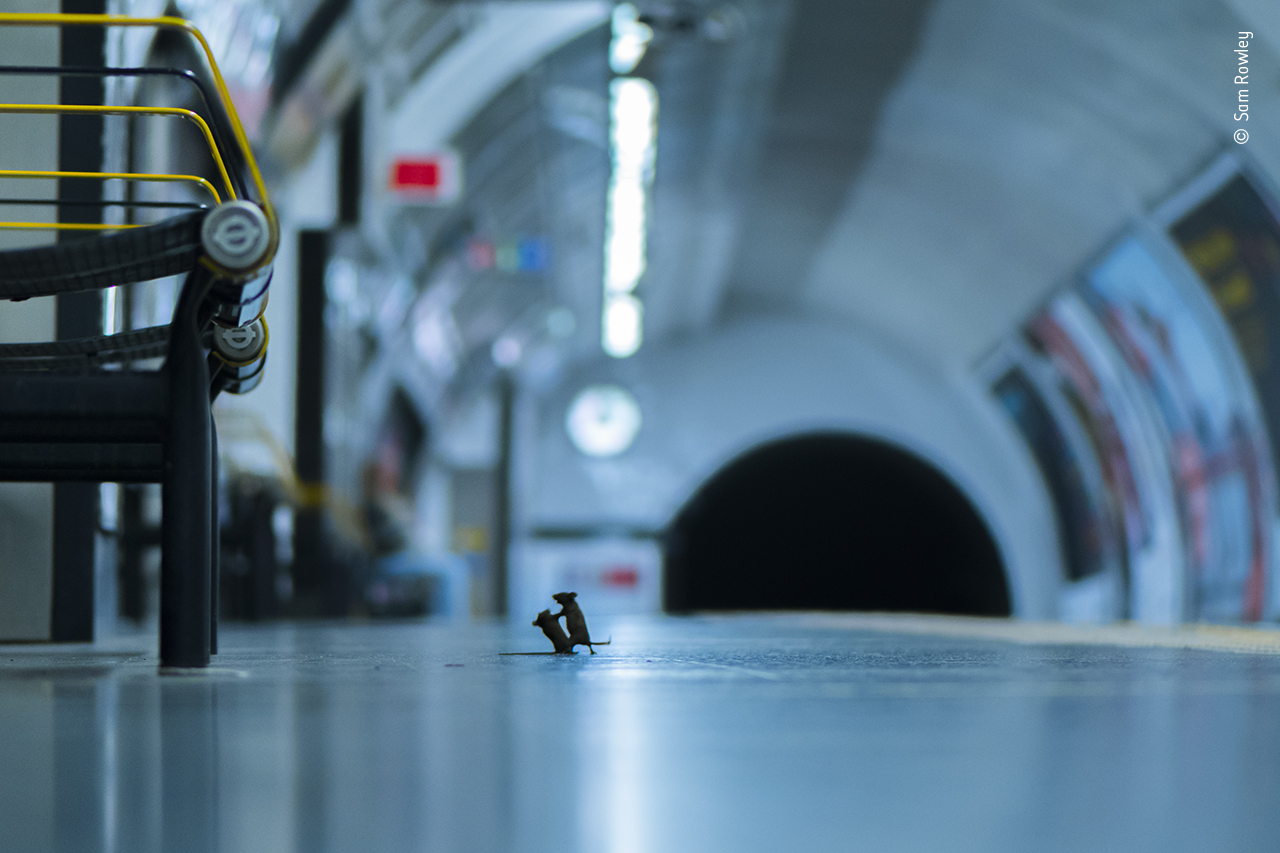
Two mice dance the tango after a romantic night out in London … is what we wish this photo was about. Actually, this incredible action shot taken by U.K.-based photographer Sam Rowley shows two of the London Underground's 500,000 resident mice fighting over a scrap of food on a subway platform. In February, the photo won the people's choice award for the London Natural History Museum's Wildlife Photographer of the Year competition.
Cannibal jelly buffet
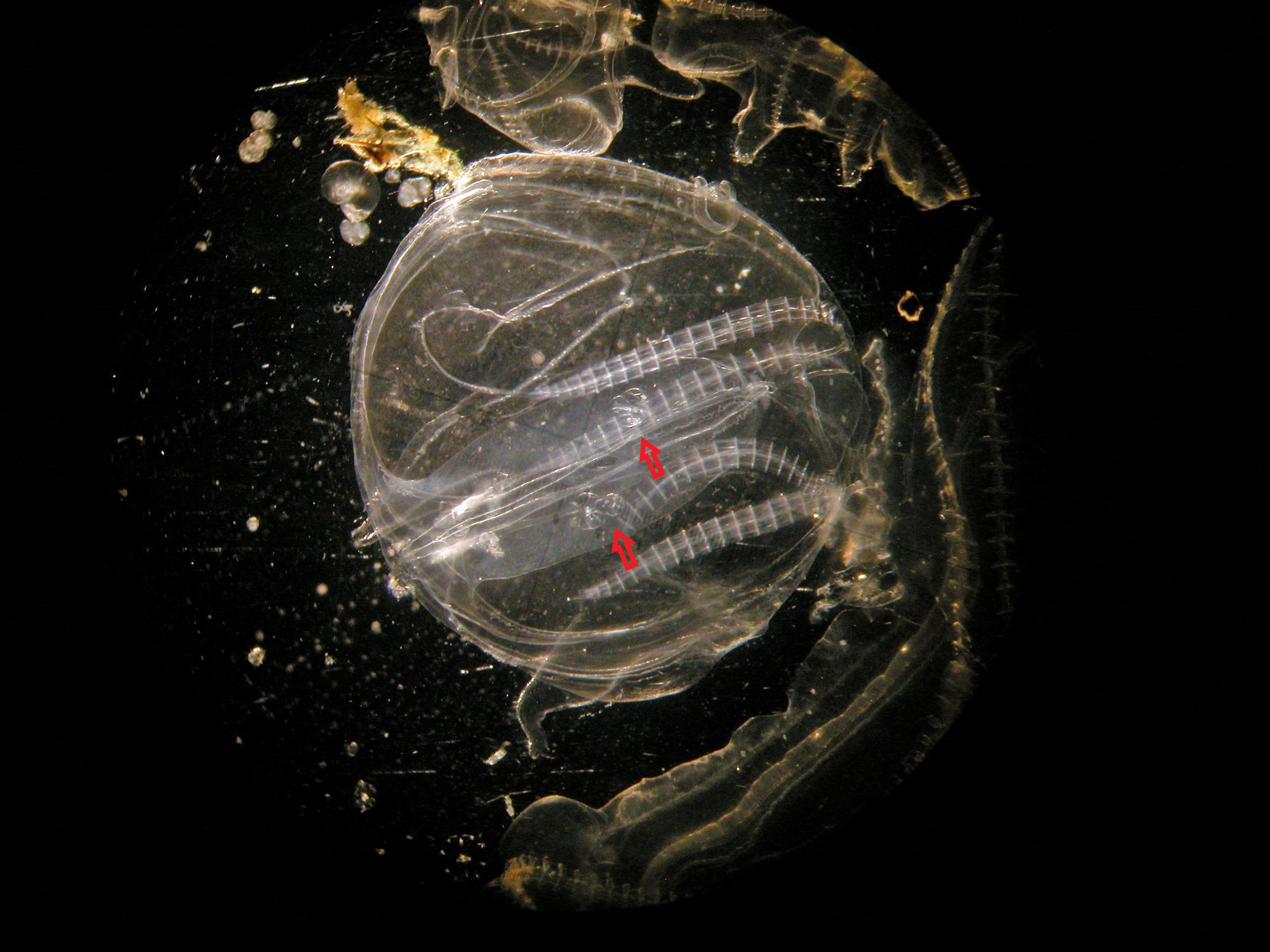
Warty comb jellies (Mnemiopsis leidyi) are an invasive ctenophore — a jellyfish relative — native to the eastern Atlantic Ocean and first introduced to the Baltic Sea in the 1980s. In a May 2020 study, researchers learned that the prolific blobs are able to survive through extensive low-food periods by cannibalizing their own larvae. Not only did the study authors witness the jellies devouring their own young in a laboratory experiment (adults ate their babies after fewer than 36 hours without other prey), but the researchers also took this incredible photo of a wild warty comb jelly floating through the Baltic with two larvae in its gut.
Fly sex in amber
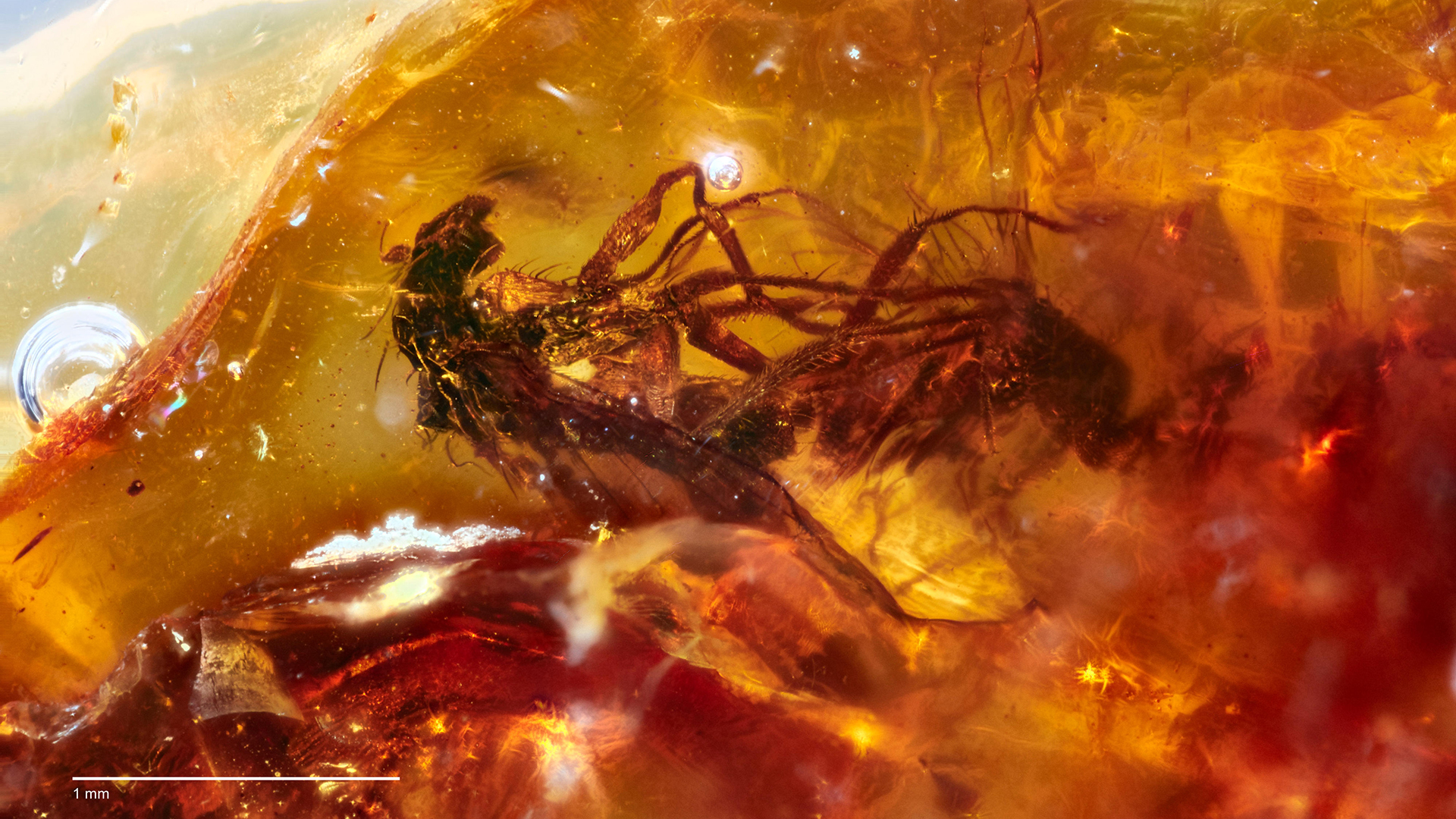
About 41 million years ago, two long-legged flies had just begun an amorous tryst when they were caught fast in sticky sap, which eventually hardened around their joined bodies to form an amber tomb. The last moments of these mating flies, now locked in amber, offer a fascinating window into life in the Eocene epoch (around 55 million to 34 million years ago). This remarkable "frozen behavior" is one of many amber specimens that scientists recently discovered this year in Australia.
Snot bombs away
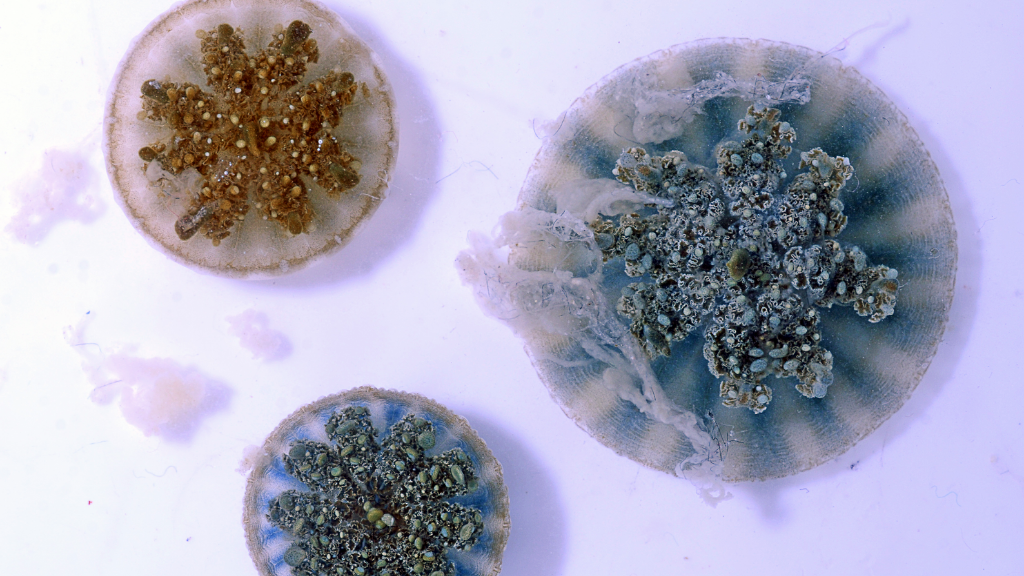
Scientists finally discovered the source of mysterious "stinging water" that zaps the skin of people swimming in tropical lagoons around the world: A mix of jellyfish mucus and venom-filled "bombs." The upside-down jellyfish (Cassiopea xamachana) rests top-down on the ocean floor and secretes viscous mucus into the water above. When researchers examined the snot under the microscope, they saw tiny spheres spinning around in the fluid. Stinging cells coat the spheres and deposit venom on creatures that run into them.
The first sight of COVID

It's a sadly familiar sight now: One of the first-ever images of SARS-CoV-2, the coronavirus that has sickened more than 77 million people and killed over 1.7 million in an outbreak that began in Wuhan, China. Researchers at the National Institute of Allergy and Infectious Diseases' Rocky Mountain Laboratories (RML) imaged samples of the virus and cells taken from a U.S. patient infected with COVID-19, the disease caused by SARS-CoV-2.
The animal that doesn't breathe

The microscopic parasite H. salminicola looks like a bunch of blue sperm with alien-like eyes. It's actually something even more bizarre: the first known animal on Earth that does not breathe oxygen. The bacteria lurks inside fish and worms and is known for infecting salmon with the white-pocked ailment called "tapioca disease." Scientists looked at the peculiar parasite's genome for the first time this year, and they discovered it had lost all its genes related to respiration.
Bursts in the ice

A longstanding mystery has plagued physicists for two decades: Why do tiny, ghostly subatomic particles known as neutrinos have mass? The reigning physics model can't explain it, but the answer could be found beneath the Antarctic ice. While ordinary, low-energy neutrinos zing through the planet all the time without banging into anything, high-energy neutrinos might bang into a detector buried in the coldest continent's ice, known appropriately as IceCube. As they ping the detector, they would leave a telltale signal known as a "Zee burst," according to researchers. This illustration shows what IceCube would look like without all the ice.
Dancing with the star

Einstein's theory of general relativity was proven right (again!) this year, thanks to the wobbly dance of a high-speed star swirling around the monster black hole at the center of our galaxy. After watching the star — named S2 — orbit the galactic center for 27 years, researchers concluded that the star does not have a fixed elliptical orbit as predicted by Isaac Newton's theory of gravity, but rather "dances" around the black hole in a pattern that resembles a rosette drawn using a spirograph. (Einstein predicted this pattern more than 100 years ago.)
Lizard lays #1 number two
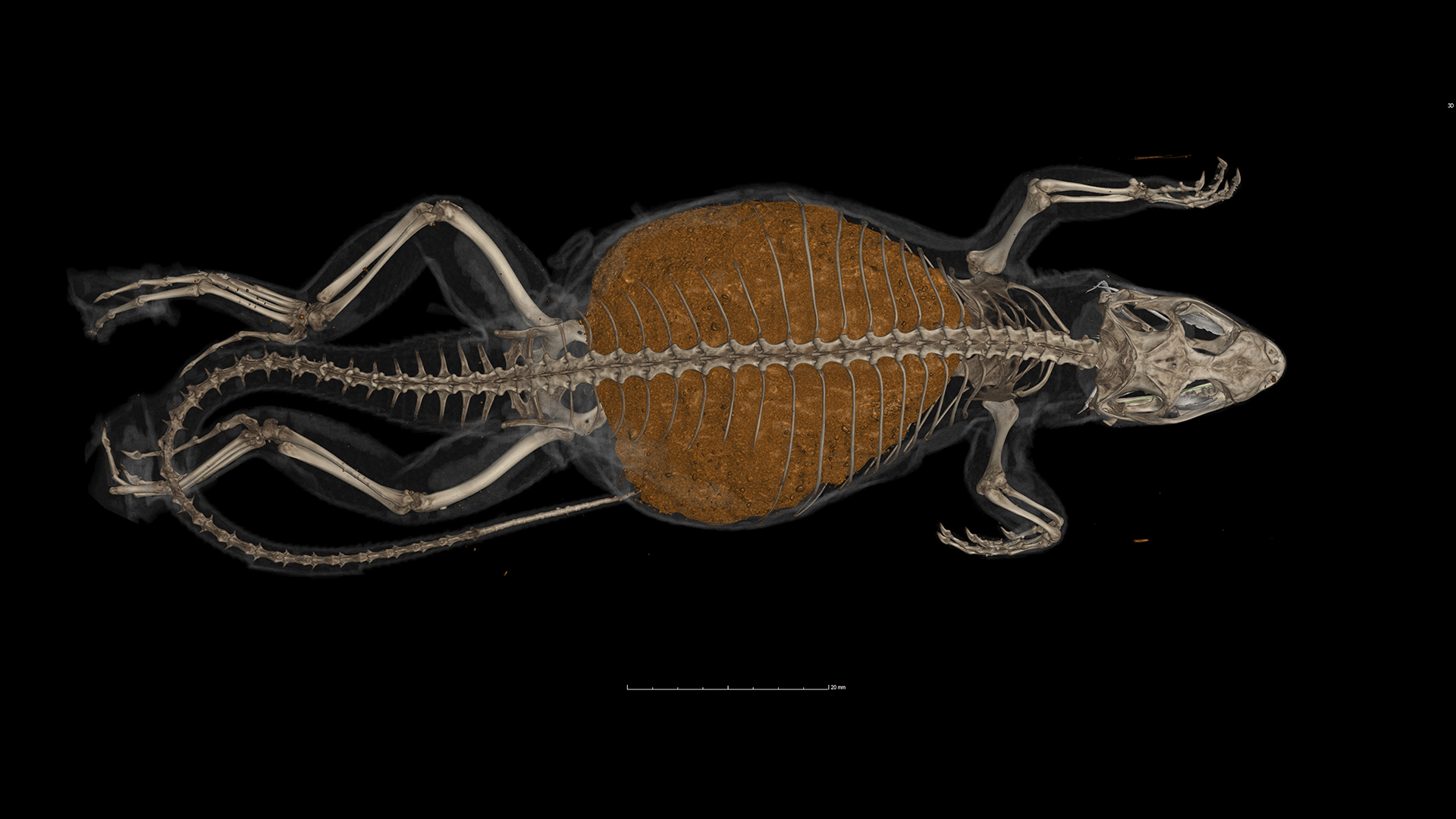
A greasy, sandy diet left a northern curly-tailed lizard with a belly distended by a heavy ball of unpassable poop. The mass was so large that it made up nearly 80% of the animal's body weight — a record-breaking body-to-poop ratio, according to a Florida biologist. (Sadly, the lizard had to be euthanized with the poo ball still blocking its stomach.)
Lake Narnia?

Houses along the shore of Lake Erie resembled ice sculptures last winter, after powerful wind gusts doused the homes with chilly lake water and freezing temperatures froze the moisture into an icy covering. Following 48 hours of strong winds and frigid chill, several feet of ice accumulated on the exteriors of three houses at Hoover Beach in Hamburg, New York. The ice was so thick that the houses were dark inside, one resident complained.
The oldest 'social network'

Rangeomorphs are thought to be some of the earliest non-microscopic animals on Earth, spreading prolifically during the end of the Ediacaran period (roughly 635 million to 541 million years ago) despite having no noticeable mouths, guts, reproductive organs or means of moving around. How did they thrive so long? Apparently, they had a "social network" of string-like filaments connecting them, a new study of hundreds of Canadian rangeomorph fossils found. Those filaments stretched anywhere from a few inches to several feet long, and could have helped rangeomorphs exchange nutrients or even clone themselves through asexual reproduction.
A 'cosmic reef' blooms in space
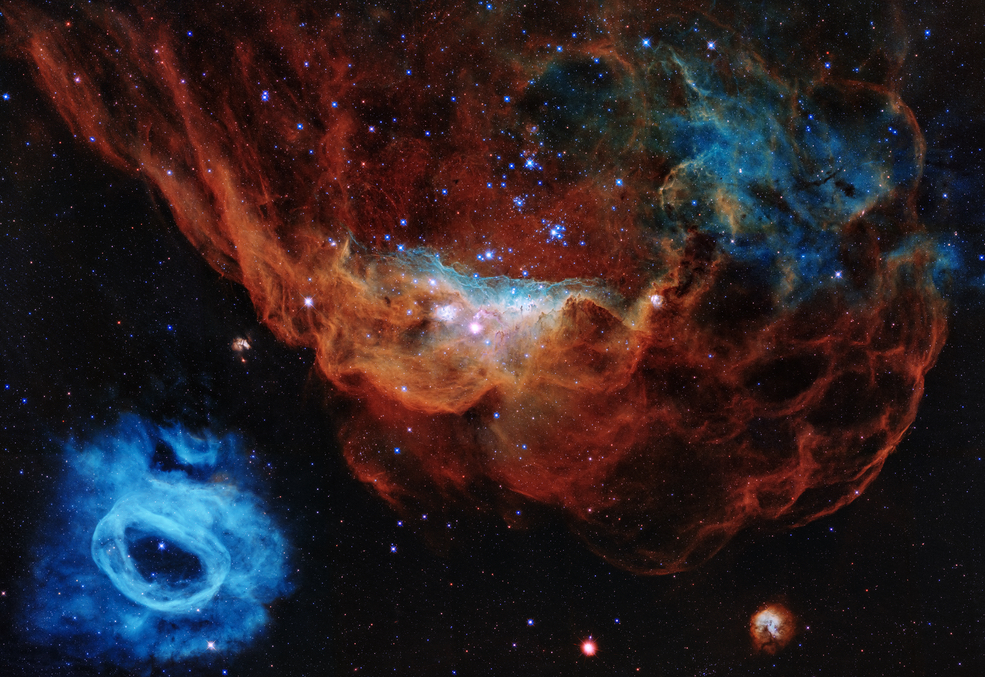
Young stars blaze to life in a nearby galaxy, repainting their cosmic neighborhood with fiery blooms of gas and radiation. This Hubble Space Telescope image — taken in honor of the telescope's 30th anniversary in space — captures just another day in the life of two young nebulas (one red, one blue) in the Large Magellanic Cloud, a satellite galaxy of the Milky Way located about 163,000 light-years away. The star at the center of the blue nebula in the bottom left corner of the image is about 200,000 times brighter than our sun, NASA scientists said. Radiation from those stars causes the surrounding gas to glow in stunning colors.
The world's oldest roaches
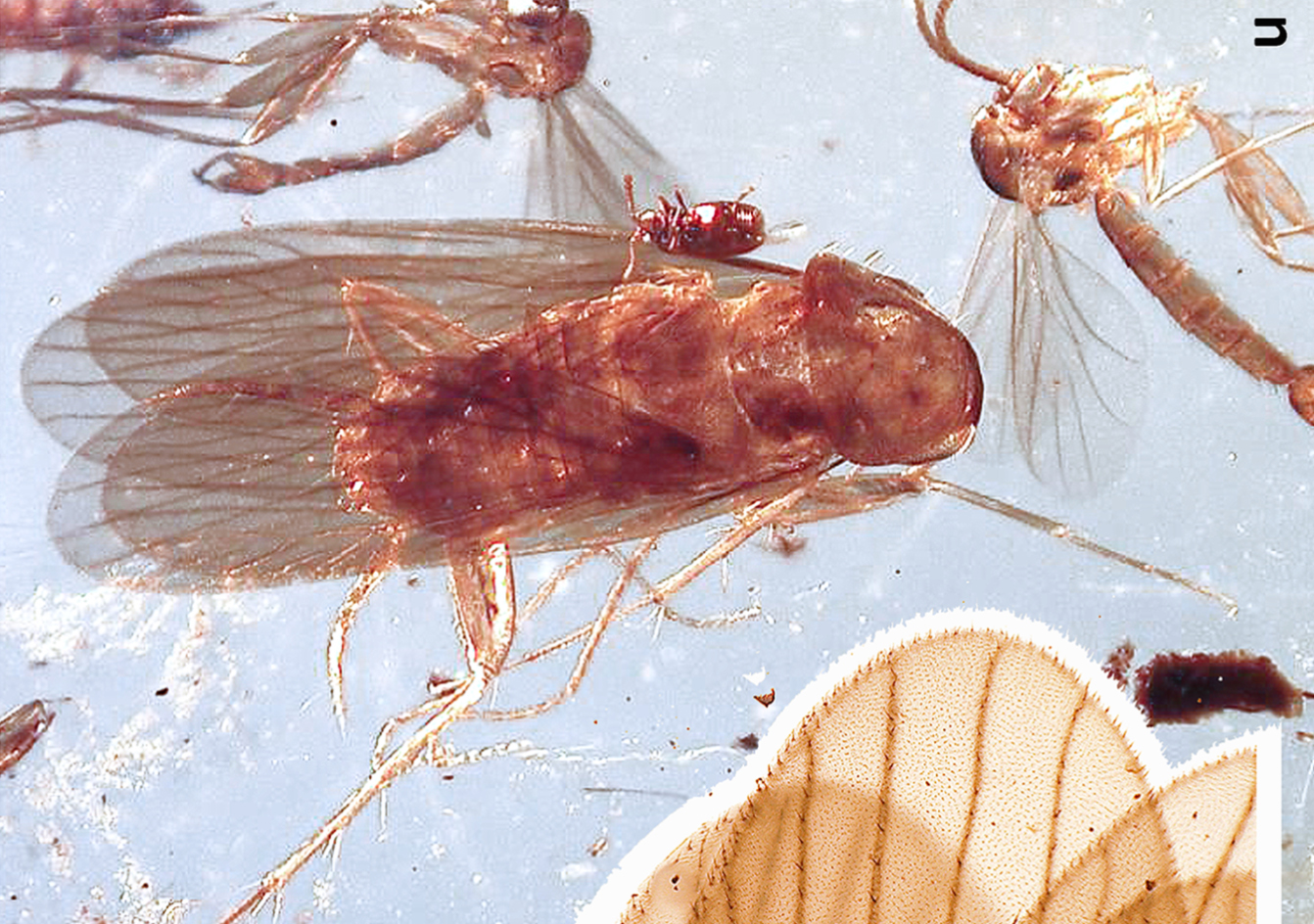
It's rarely a treat to discover a cockroach at work, let alone two, but archaeologists were stoked this year to find a pair of cockroaches trapped in amber, apparently dating to the days when Tyrannosaurus rex walked the Earth. The roaches are 99 million years old, the authors of a new study wrote, making them about 30 million years older than the next-oldest cockroaches in the fossil record.
The 'all terminator' moon
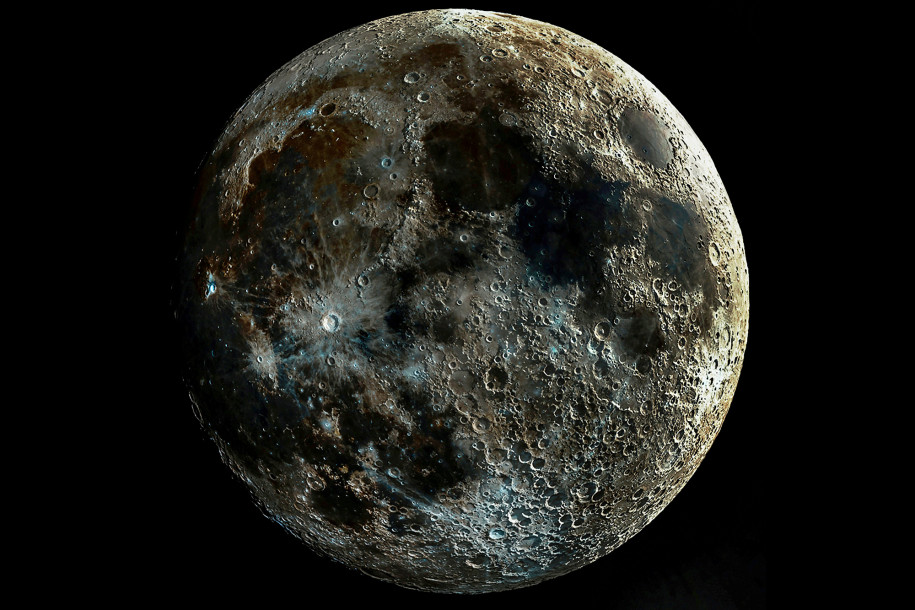
Shadows creep down the banks of every crater on the near-side of the moon, highlighting the pockmarked face of Earth's gravitationally-bound buddy with a clarity never before seen. According to photographer Andrew McCarthy, who posted the stunning image to his Instagram in April, this lunar view is actually "impossible."
"This moon might look a little funny to you, and that's because it is an impossible scene," McCarthy wrote on Instagram. "From two weeks of images of the waxing moon, I took the section of the picture that has the most contrast … aligned and blended them to show the rich texture across the entire surface."
Garden of the deep

The South Australian coast is surrounded by a labyrinth of underwater canyons, many of them still unexplored. This year, a team of researchers (and their underwater robot companion) completed a survey of three such canyons, uncovering a hidden world of both thriving coral gardens and ash-white coral graveyards. Studying the living and dead coral populations could reveal how the area has reacted to climate change over time, and how other underwater ecosystems could react as the oceans continue to warm.
The princess' bones

Experts recently confirmed that human remains found behind a church wall in Folkestone in the United Kingdom belong to one of England's earliest saints. Her name was Eanswythe; she was the granddaughter of Ethelbert, the first Christian King of Kent, and she died around the middle of the seventh century, when she was in her late teens or early 20s. The bones were likely hidden away centuries later to prevent them from being destroyed during the Protestant Reformation, and they were discovered when workmen broke through one of the church's walls in 1885.
The slightly-less-great red spot

Jupiter's Great Red Spot — the angry storm swirling around our solar system's largest planet — is shrinking. Just a few centuries ago, the famous storm was about three times wider than Earth — but now, its swirl of winds is comparable in diameter to our home planet, leading to some speculation that the Great Red Spot may be dying. However, research this year indicated that the vortex that powers the cyclone is still going strong.
Your oldest ancestor

Scientists in Australia discovered fossil evidence of what may be the oldest shared ancestor of all living animals. The creature in question is a worm-like organism that burrowed beneath the sea in search of nutrients some 555 million years ago, during the Ediacaran period (571 million to 539 million years ago). The primeval creepy-crawler, which was about the size and shape of a grain of rice, may not look much like you or me, but it is the oldest known example of a bilaterian — an animal with two symmetrical sides, a distinct front and back end and a continuous digestive system connecting them.
Sphinx at sunset

The Sphinx and the sun had a "distinctive astronomical" moment together during the spring equinox on March 19, when the sun set on the shoulder of the half-man, half-lion statue. The Sphinx's unique position indicates that the ancient Egyptians put it there purposefully, the Egypt Ministry of Antiquities said, in order to take advantage of the special light conditions of the twice-annual equinox.
The shipwrecked Stickleback

Explorers found the wreck of a lost United States Navy submarine that sank more than 60 years ago in deep water near the Hawaiian island of Oahu. USS Stickleback, a Balao-class submarine with the hull number SS-415, sank on May 28, 1958, after an accidental collision with another U.S. Navy ship during an antisubmarine warfare exercise. Sonar scans of the sub, like the one seen above, show the Stickleback is now broken in half, with its bow and stern sections lying on the seafloor almost 1,000 feet (300 m) apart.
Titanium kitty
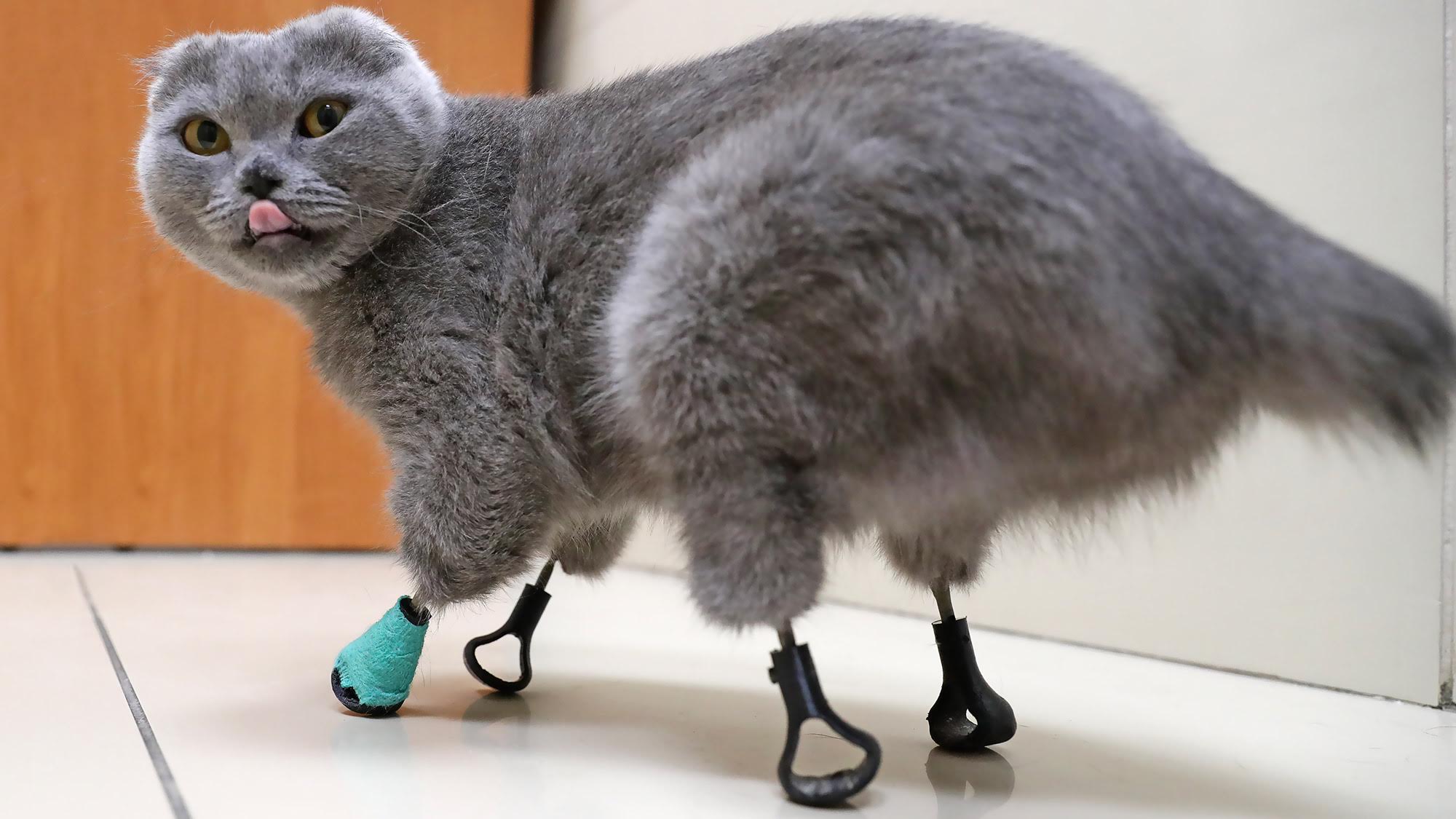
A hardy grey feline in Russia got a new lease on life after suffering from frostbite. The female cat, named "Dymka" (Russian for "mist") was found in 2018, buried in the Siberian snow, with four frostbitten paws, ears and a tail. The frostbite was so extensive that veterinarians had to amputate those limbs. But researchers at the Tomsk Polytechnic University in Tomsk, Russia created specially-designed titanium paws for the cat, then fused them to her leg bones. The new limbs were implanted in July 2019; just 7 months-later, scientists posted adorable video of Dymka stretching, playing and strolling.
The Grand Canyon of glaciers

Glaciers are giant slabs of ice sitting on top of continental bedrock. The bedrock below Denman Glacier — a 12-mile wide (20 kilometers) stream of ice in East Antarctica — happens to include the single deepest land canyon on Earth (shown as a dark blue streak in this NASA illustration). Known as the Denman trough, the canyon plunges 11,000 feet (3,500 meters) below sea level, and is almost entirely filled with glacial ice. That could pose a serious problem for Denman Glacier as global warming continues to push the glacier's underwater edge further and further into the canyon.
Starry, starry abdomen
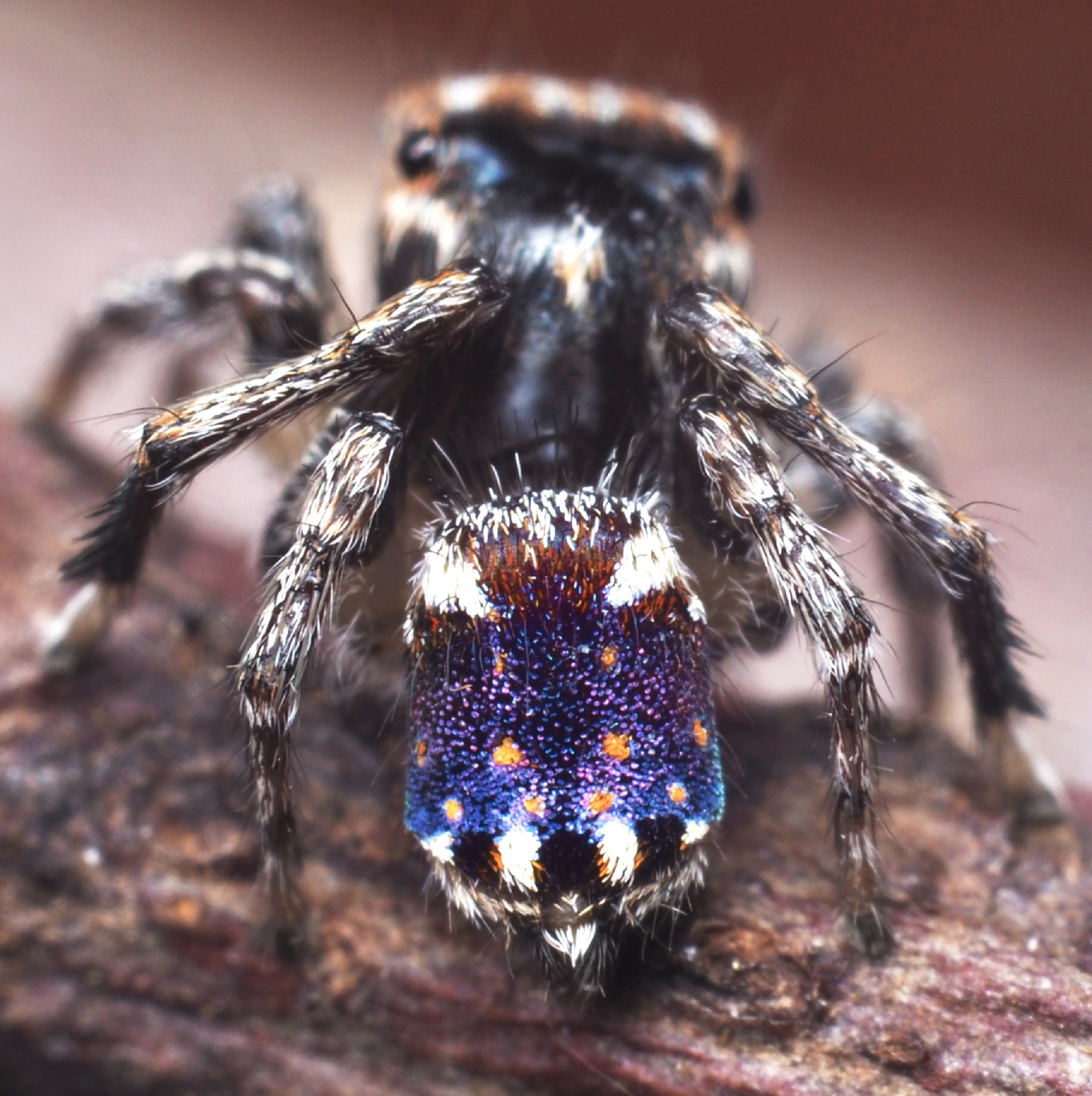
Peacock spiders (genus Maratus) are known for their luminous badonkadonks, which males use to dazzle potential mates through sexy spider courtship dances. This year, an entomologist in Australia described seven brand new species of peacock spiders, thanks largely to crowd-sourced photos sent in from citizen scientists across the continent. Included among the new species is the looker shown above, Maratus constellatus, which entomologist Joseph Schubert named in honor of the twinkling blue-and-yellow heavens in Vincent Van Gogh's The Starry Night.
The golden age of Donkey Polo
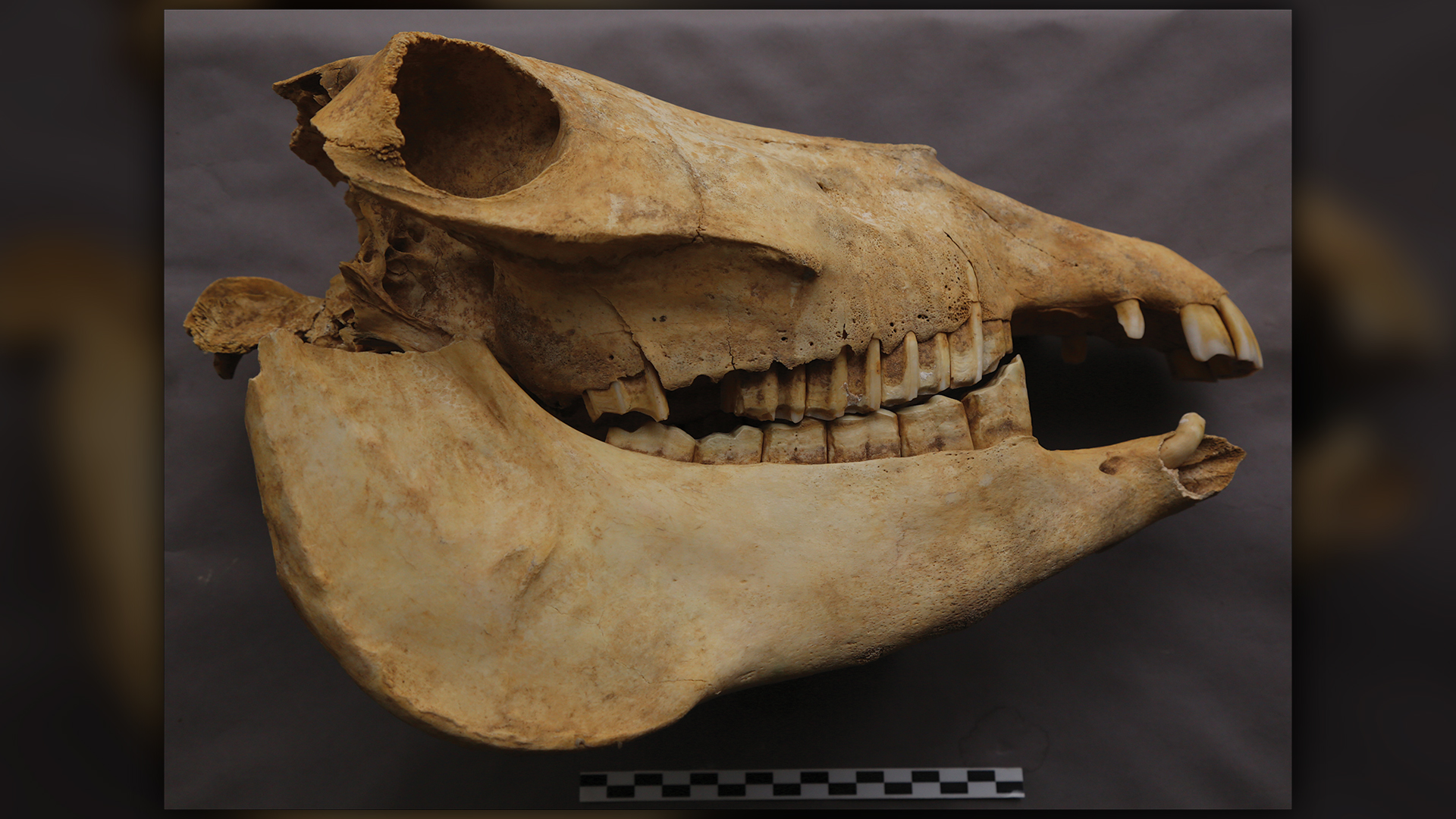
Scientists recently found the first evidence that nobles in imperial China played donkey polo, in the tomb of a wealthy, important woman who died in Xi'an more than 2,000 years ago. The woman, named Cui Shi, was buried with donkeys, possibly so she could keep playing donkey polo in the afterlife, researchers reported in a new study. One of their toothy skulls is pictured above.
Un bee-lieveable
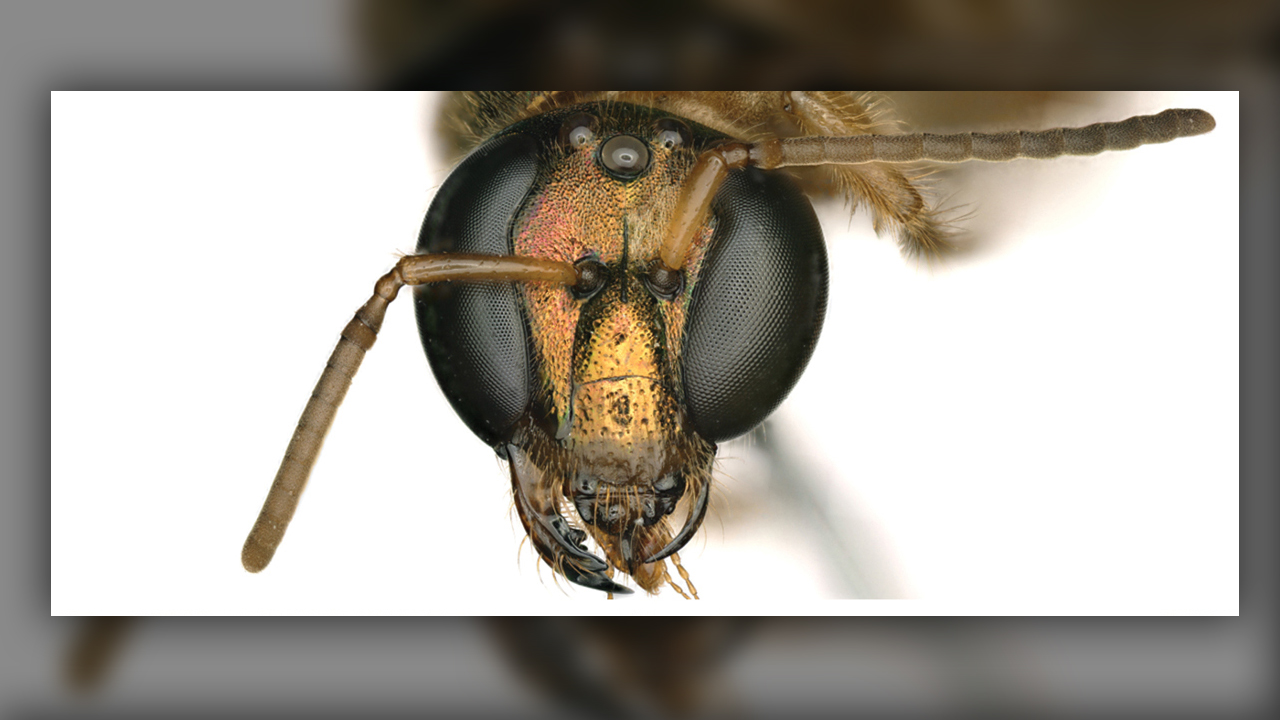
This year, researchers found a bee that had a male side and a female side — literally. The left side of the bee's body had male traits, while the right side of the body was female. On the female side of its head, the bee had a forward-facing antenna and a bigger mandible; the antenna on the male side swept backward and the jaw was noticeably smaller. Known as gynandromorphy, this rare condition has been documented in birds, insects, crustaceans and snakes.
Glowing platypus
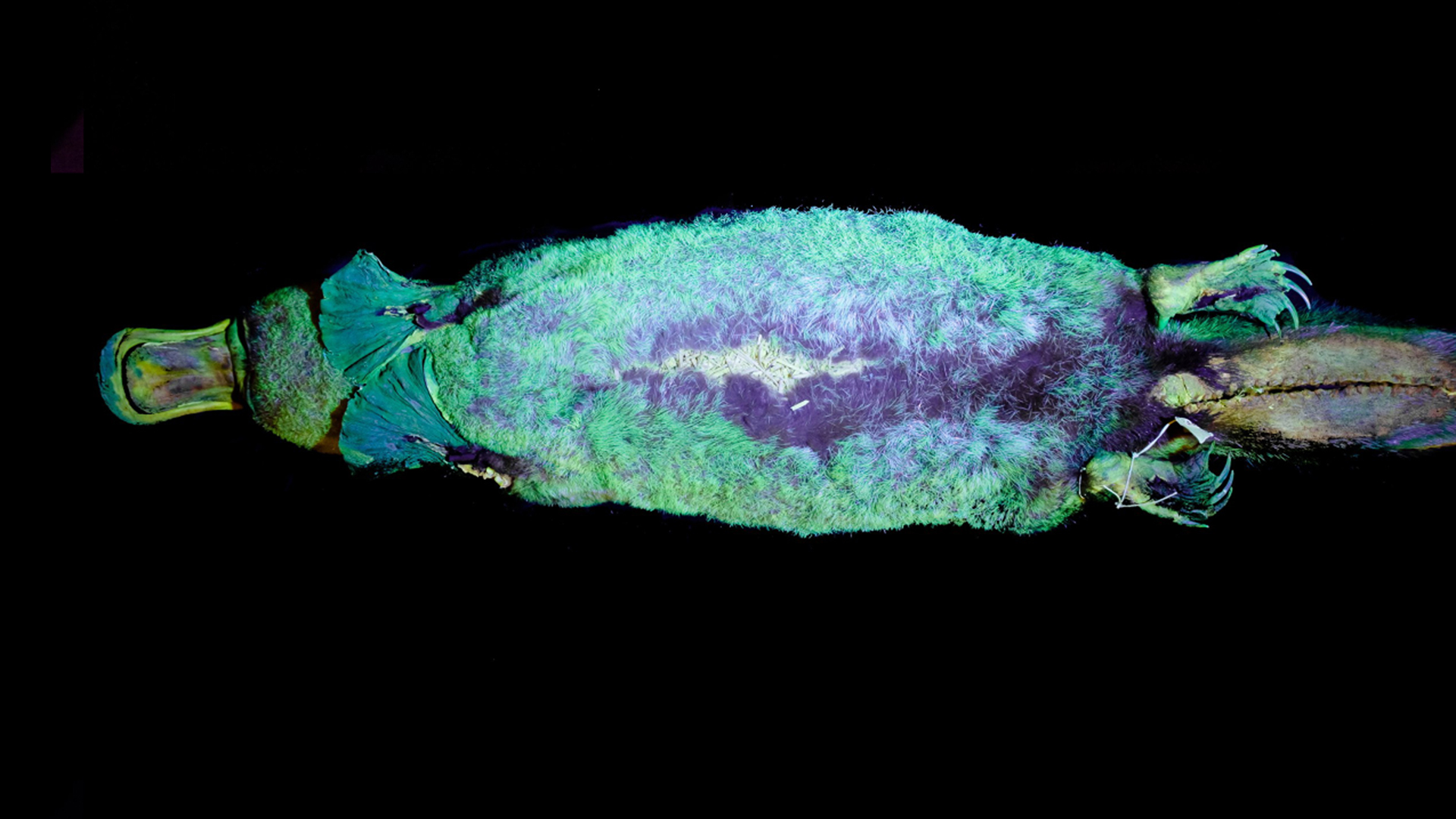
Duck-billed, egg-laying platypuses just got a little weirder: It turns out their fur glows green and blue under ultraviolet (UV) light. Biofluorescence — absorbing and re-emitting light as a different color — is widespread in fish, amphibians, birds and reptiles. But the trait is much rarer in mammals, and this is the first evidence of biofluorescence in egg-laying mammals, also known as monotremes, scientists reported in a November 2020 study.
Tornado of fire

From September 2019 to March 2020, Australia endured one of the worst bushfire seasons in the continent's history. More than 46 million acres burned and thousands of homes were destroyed. Here, a fire tornado shoots through the sky near Sydney. These burning cyclones form when hot, dry air rises quickly from the ground to create vertical columns or chimney-like structures of swirling flames.
Woman seeks man in "erotic binding spell"

Scholars are translating an 1,800-year-old Egyptian papyrus describing what they call an "erotic binding spell," in which a woman named Taromeway tries to attract a man named Kephalas. On the papyrus, a drawing shows the Egyptian jackal-headed god Anubis shooting an arrow into Kephalas, who is depicted nude. The arrow Anubis shoots is intended to inflame Kephalas' lust for Taromeway, researchers say.
Dagger of the lost empire

A teenager discovered a dagger in the 2,000-year-old grave of a Roman soldier buried in Germany. However, the dagger, which was still in its sheath, was so corroded that it took nine months to restore it with sandblasting and grinding techniques. Once cleaned, archaeologists were awed by the dagger and sheath's rich decorations, which included red glass, silver and enamel.
The world's longest "animal"
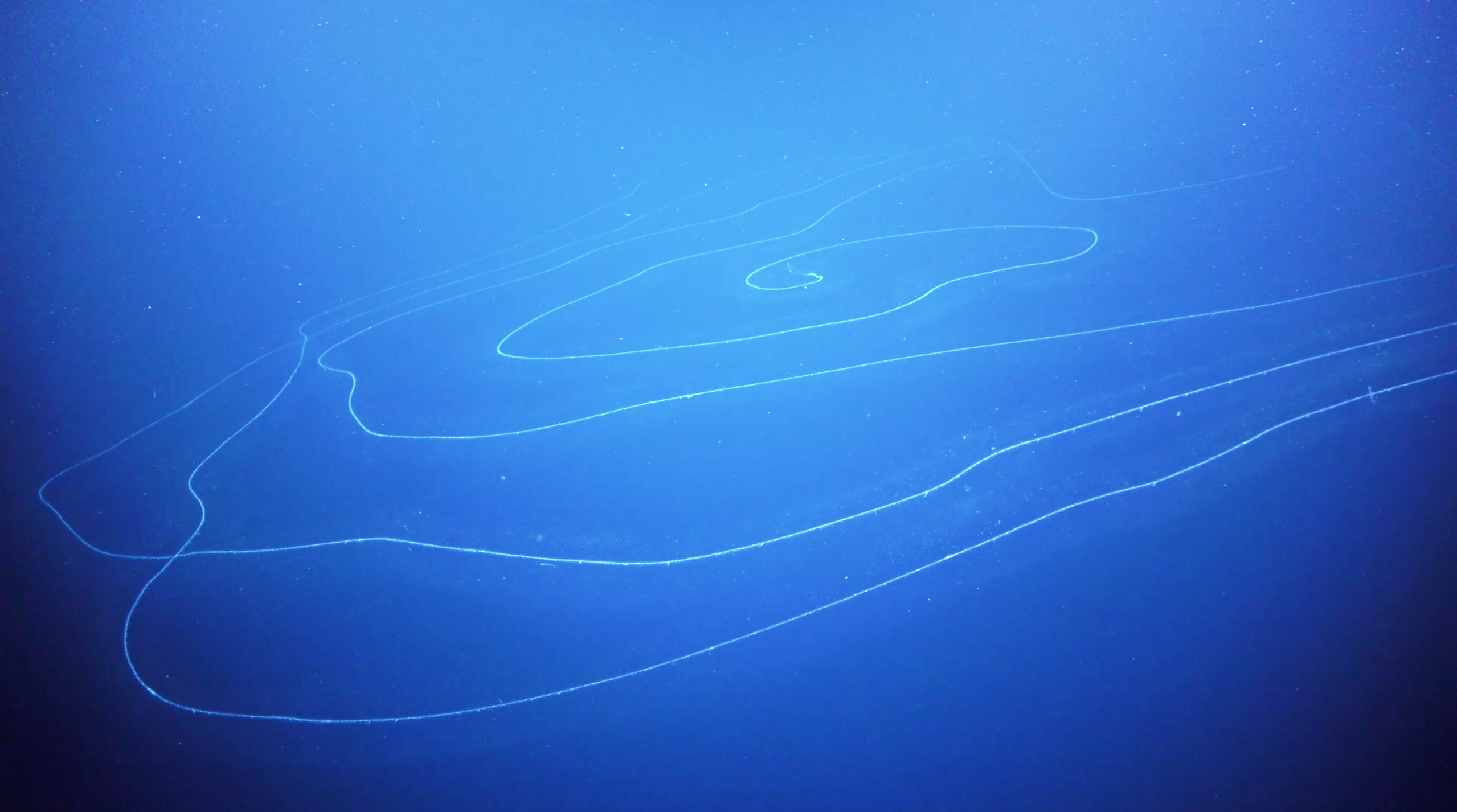
Underwater explorers found a 150-foot-long (45 meters) siphonophore — a translucent, stringy creature that, like coral, is made up of smaller critters — living in a submarine canyon off the coast of Australia. It's "seemingly the largest animal ever discovered," they said. Every individual siphonophore is made up of many little "zooids," each one performing a function for the siphonophore's larger body. Linked together in long chains, the colonies were already known to reach lengths of up to 130 feet (40 m) — though each siphonophore is only about as thick as a broomstick.
A tear in the ozone layer

In April, scientists detected what may be the largest hole in the ozone layer ever recorded over the North Pole. The hole in the ozone layer — a cushion of gas that shields Earth from the sun's ultraviolet rays — covers an area roughly three times the size of Greenland, scientists from the European Space Agency (ESA) said in a statement. (Fortunately, the hole closed on its own several weeks later.)
An alien rock's new origin story
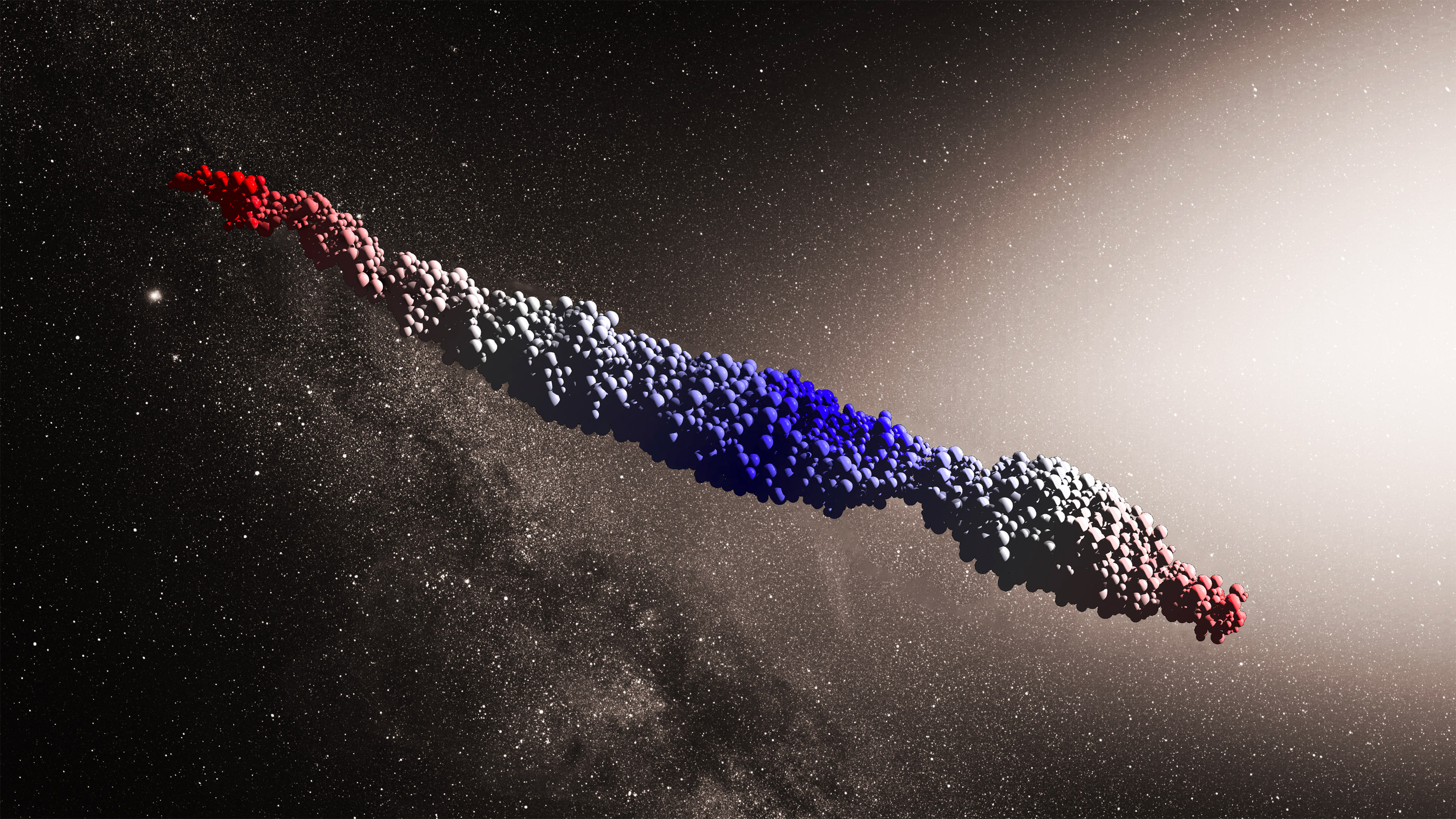
The mysterious interstellar object 'Oumuamua has baffled scientists since it first appeared in our solar system in October 2017. This year, a new simulation (pictured above) offered a compelling origin story for the strange object: Perhaps, the study claimed, the cigar-shaped rock is a mass of fragments shed by a distant comet or planet, which were bound together after venturing too close to their home star. (Others still believe the rock is an alien spacecraft).
Hello, kitty
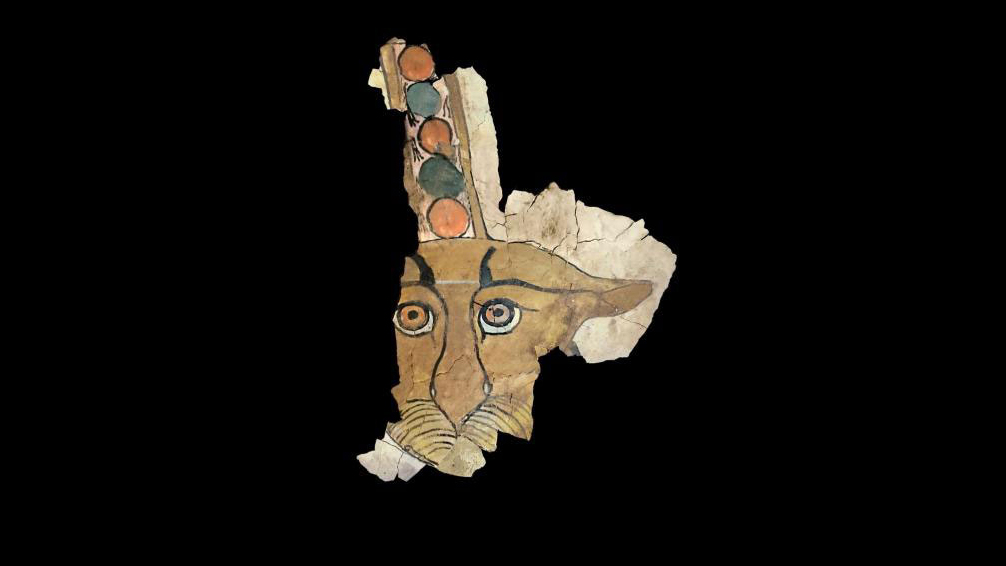
Archaeologists recently created a digital reconstruction of a colorful leopard's face from a sarcophagus, found in a necropolis in Aswan, Egypt that dates to the seventh century B.C. More than 300 tombs were uncovered in this city of the dead, which was in use for about 1,000 years.
The moon as a telescope
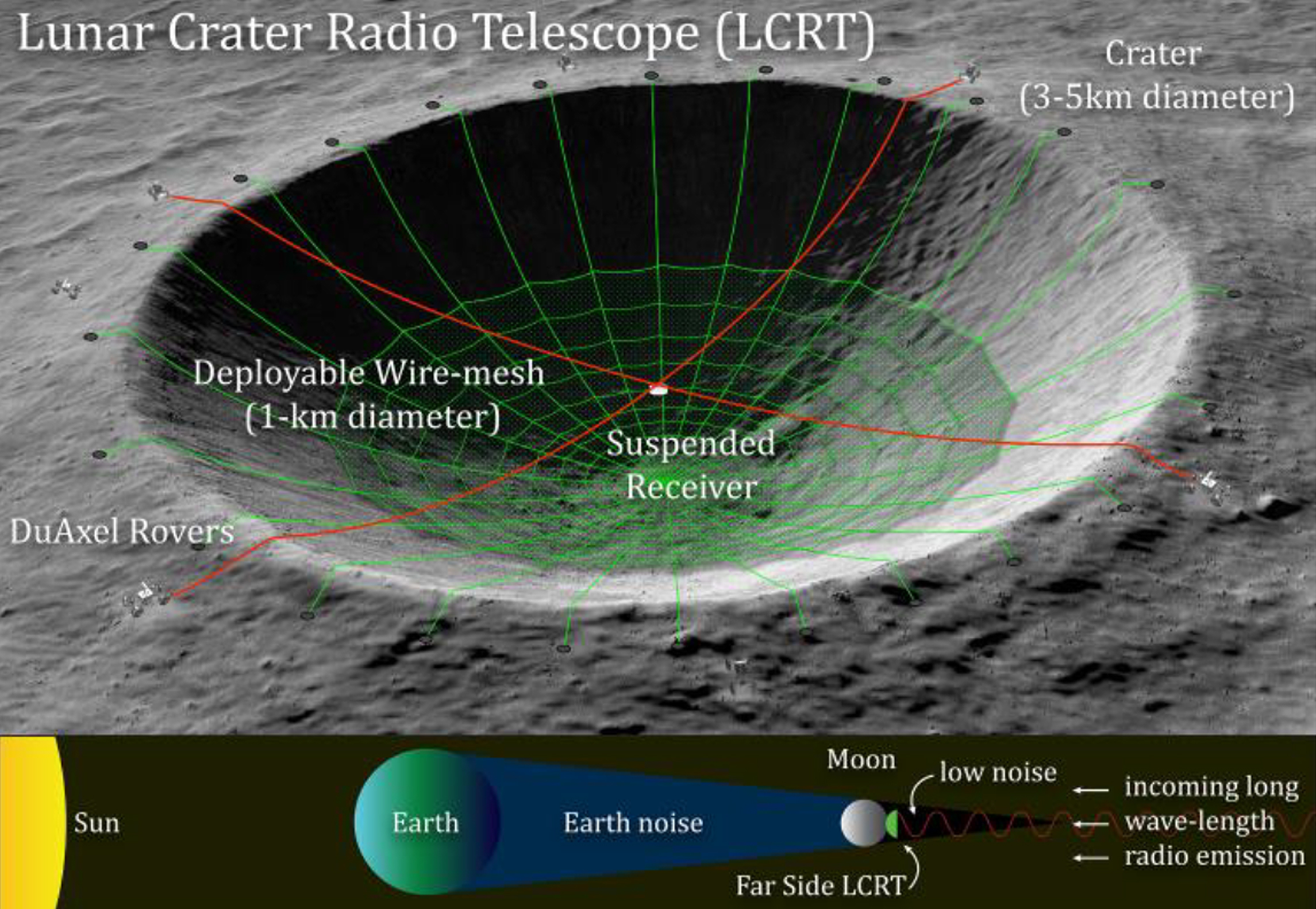
Researchers want to build a giant telescope inside a crater on the "dark side" of the moon, and NASA is into the idea. In April, the U.S. space agency pledged $125,000 to testing the feasibility of the idea — now known as the "Lunar Crater Radio Telescope" — which could offer a much clearer picture of the cosmos than Earth-bound telescopes do.
Disfigured skull of the deep
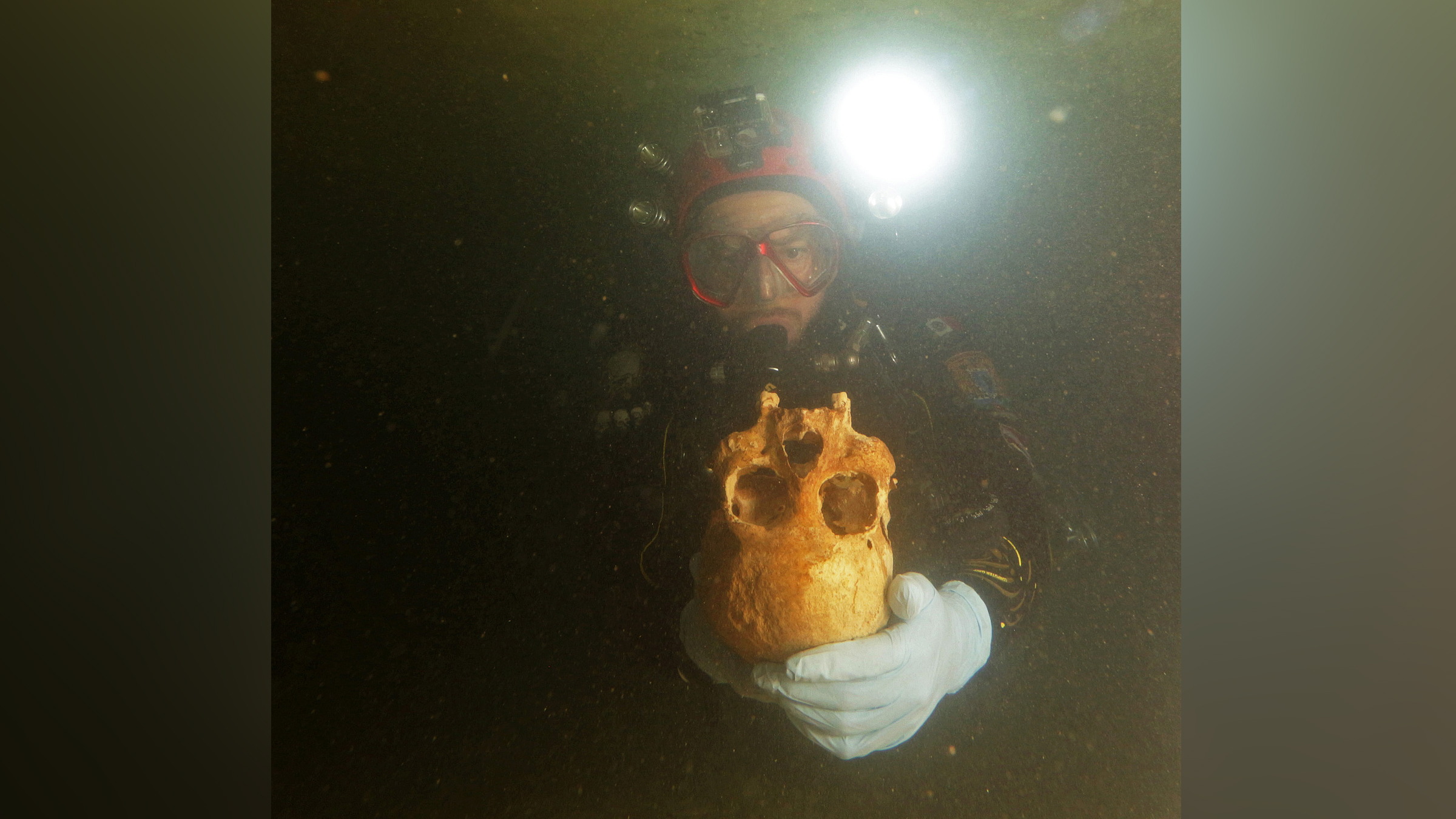
Cave divers discovered the remains of a woman who lived about 9,900 years ago on what is now the Yucatán Peninsula. The woman's skull hints at a tumultuous end; she had three injuries on her head that were made with a hard object. In addition, pits and crater-like deformations on her skull may be signs of a bacterial relative of syphilis, which would make this woman the oldest inhabitant of the Americas to have this disease.
The galaxy's creamy center

In this composite image, swirls of gas and dust light up in infrared at the center of our galaxy, the Milky Way. The gorgeous, new image could help to explain an enduring mystery: why our galaxy's heart is missing stars. So even though there's a lot of raw material there for stars to form — gas and dust — that "stuff" isn't making stars. NASA said the high-resolution image revealed new features that could help to explain the odd star formation.
A farting gorilla chorus
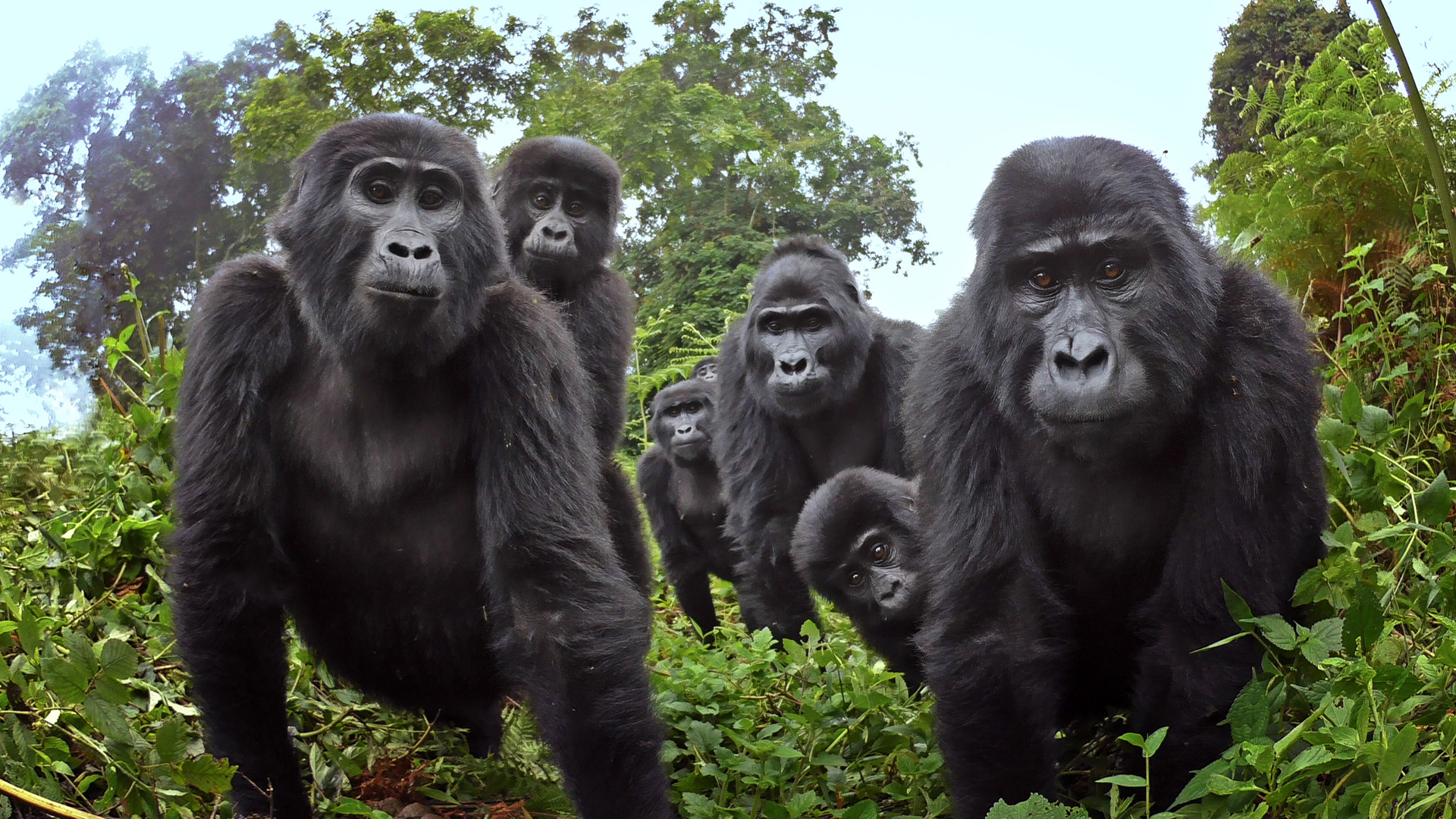
Mountain gorillas were caught on camera "singing" during their supper, a behavior that has never before been documented on video. Filmmakers captured the astonishing footage of the primate crooners with a little help from a very special camera: a robotic "spy" designed to look like a young gorilla, custom-made for the PBS series, "Nature: Spy in the Wild 2." Singing isn't all they heard; according to the show's narrator, the gorillas also live in "a near-permanent state of flatulence."
Blood snow streaks Antarctica
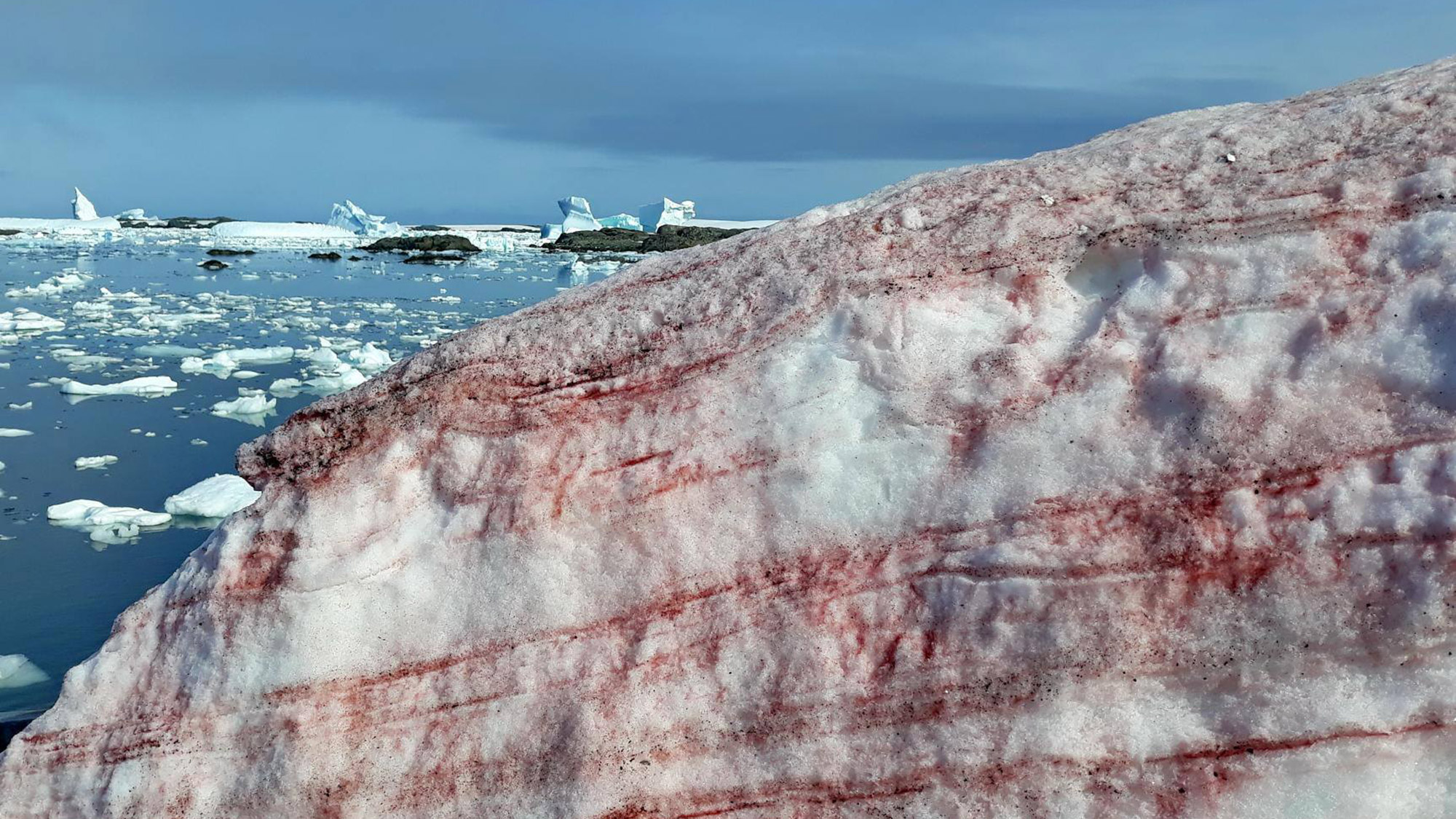
Scientists found the ice near Verdansky Research Base in northern Antarctica eerily stained with crimson-colored snow this February. What looks like blood is actually a type of red-hued alga called Chlamydomonas nivalis. Every summer, when snow around the world begins to melt, the ice-dwelling algae emerge from their cold storage to take in nutrients and spread red spores across the snow. The phenomenon is known as "watermelon snow" or "blood snow," and it's likely to happen more often as global temperatures rise.
The secret sword

A keen-eyed archaeology student made the find of a lifetime when she spotted one of the oldest swords on record, mistakenly grouped with medieval artifacts in a secluded Italian museum. The ancient sword was thought to be medieval in origin and maybe a few hundred years old at most — but studies have shown that it dates back about 5,000 years, to what is now eastern Turkey, where swords are thought to have been invented, in the early Bronze Age.
The clam of time

If the days ever feel like they're getting longer, that's probably because they are. In a new study, researchers counted the daily growth rings inside a 70-million-year-old mollusk fossil, and discovered that every day was about half an hour shorter at the end of the time of the dinosaurs than they are today. By studying the minute changes in the mollusk's growth from season to season, the researchers found that every year consisted of 372 days — meaning Earth was turning slightly faster than it does now.
This is your brain on mouse

No, you're not looking at a psychedelic Millennium Falcon: This flickering, ghostly image is the most detailed view of a mouse brain ever seen. Researchers at the Allen Institute for Brain Science in Seattle have been painstakingly recording every brain cell and every connection between those neurons in mice for the past several years. The result represents major progress since an earlier, simpler map they released in 2016. The now-complete map encompasses about 100 million cells, the institute reported in a paper published May 7 in the journal Cell.
'Alien' skulls of Rome
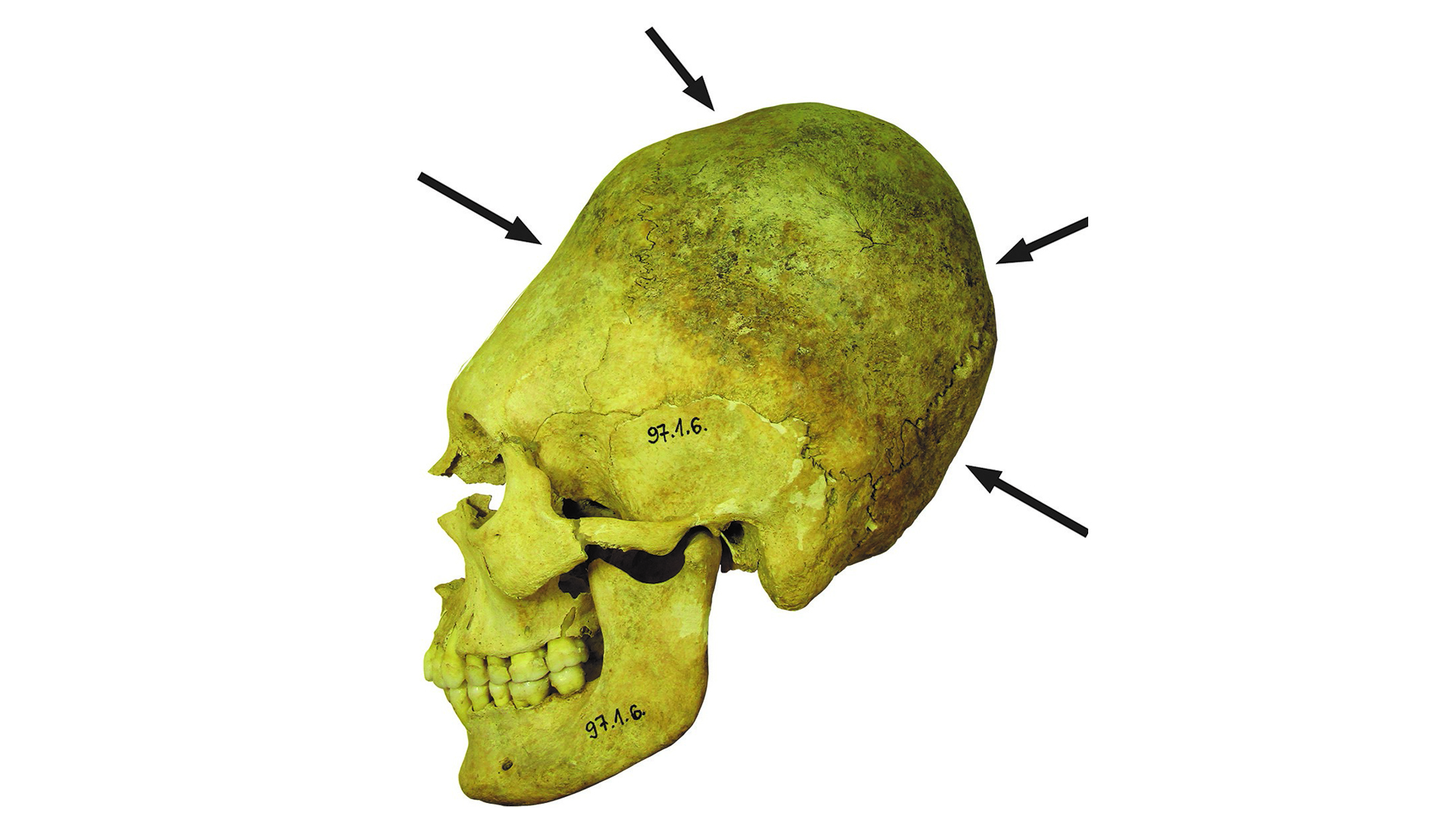
An ancient cemetery in what is now Hungary holds dozens of skeletons with elongated heads, their skulls stretched by tight binding during childhood, dating to the fifth century A.D., as the Roman Empire crumbled. Scientists used isotope analysis to measure differences in the skulls at the atomic level. They learned that the regional makeup of the community changed over time, as people migrated during times of social and political turmoil. But despite varying customs, people lived together peacefully and even shared traditions, according to archaeological and atomic evidence.
Ancient vampire of the deep
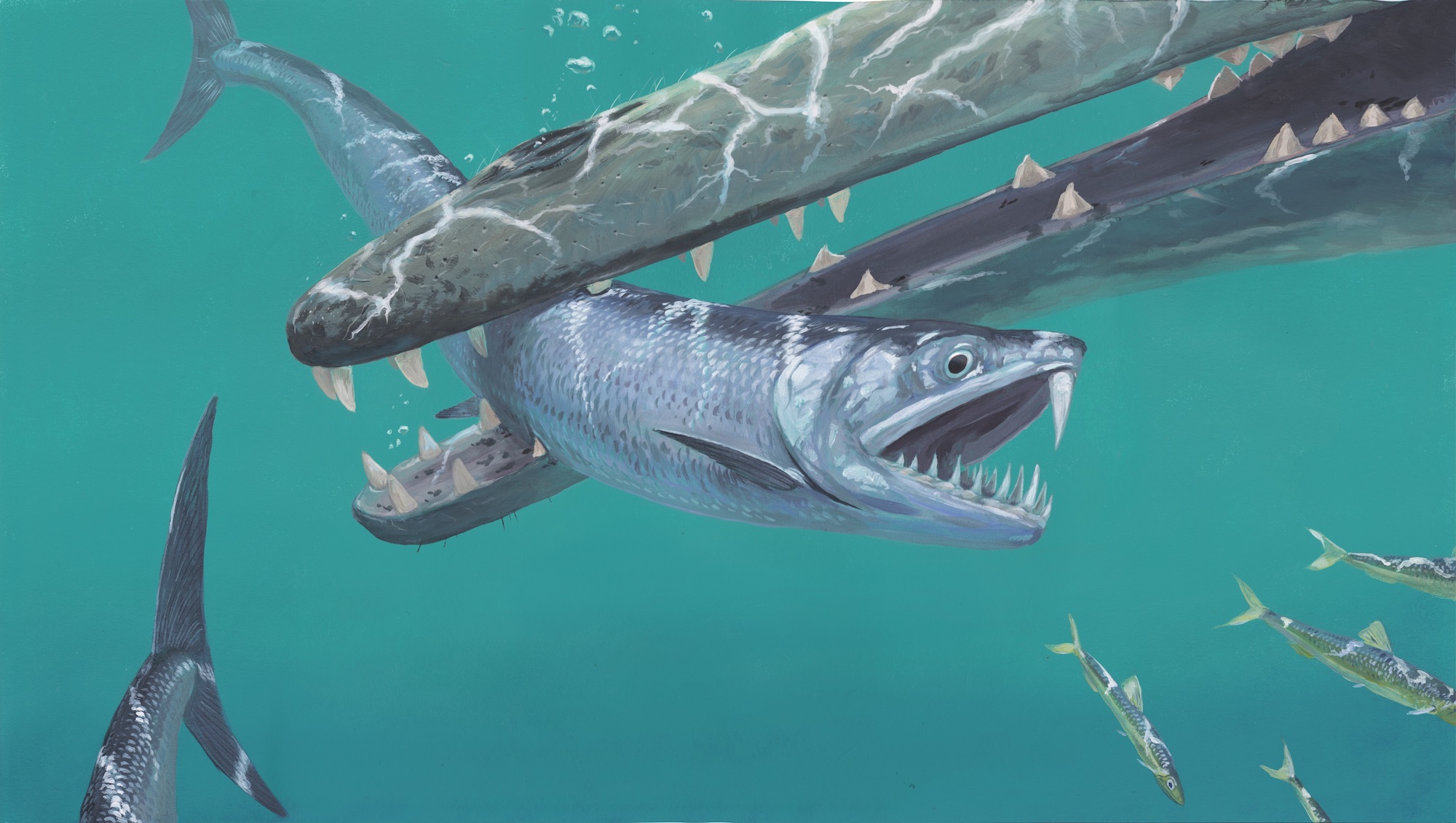
Scientists discovered the remains of two ancient fish that sported fanged teeth on their lower jaws and a huge, single saber tooth on the top. These now-extinct fish are so weird, there's no other known fish — living or dead — that look like them. The fishes' teeth are so strange that scientists named one of them Monosmilus chureloides, which roughly translates to "single knife Churel." If you're wondering what a Churel is, don't read this before bedtime; it's a shapeshifting vampire-like demon with large fangs found in the folklore of several South Asian countries, including Pakistan, where the fossil was unearthed.
Great X in the sky
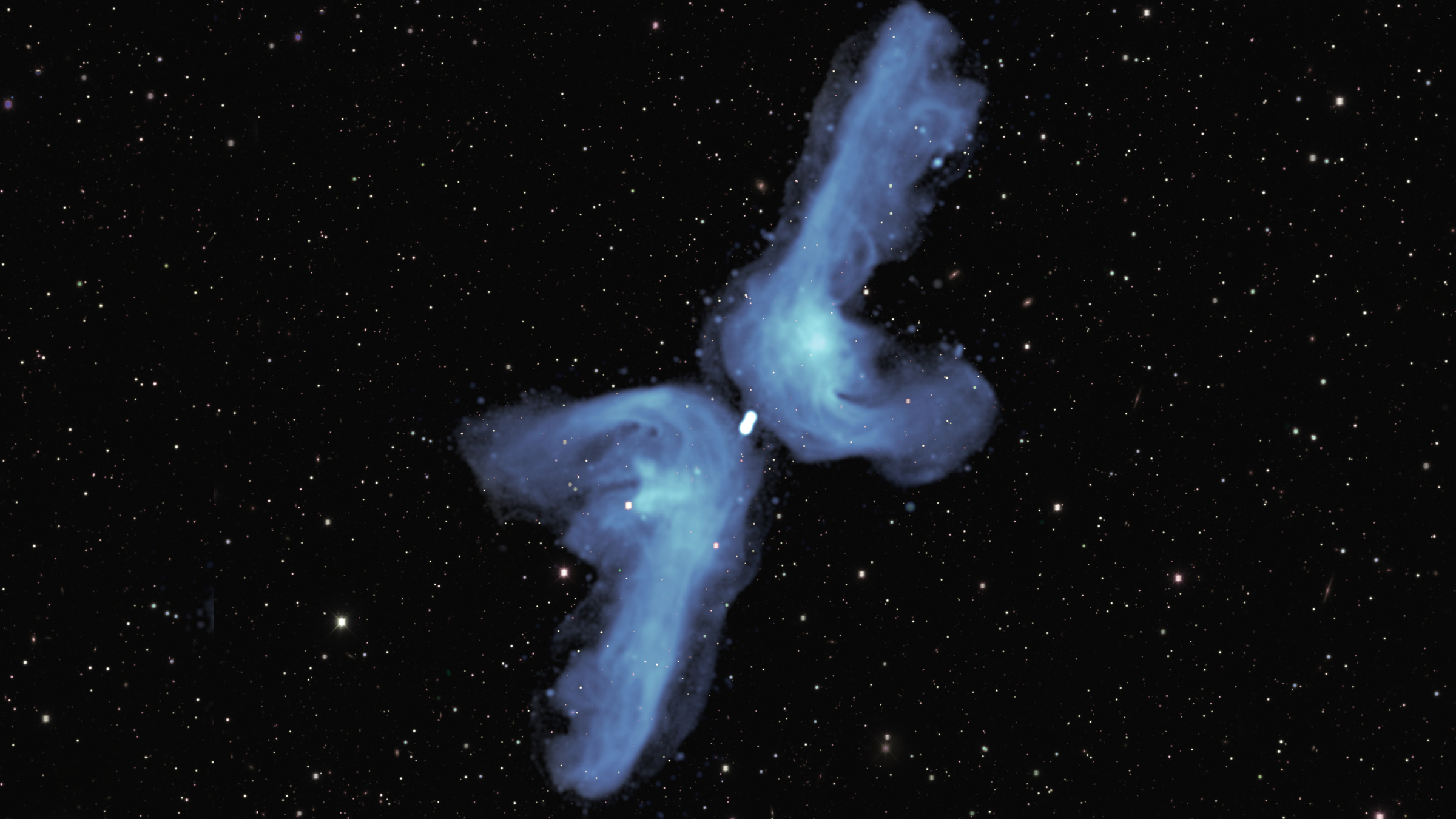
Spied through a normal telescope, the galaxy PKS 2014−55 is an unremarkable smudge of bright light. But look again in radio wavelengths, and you'll see that the galaxy is hiding a gargantuan, glowing treasure at its center — and X marks the spot. This year, scientists used the massive MeerKAT radio telescope in South Africa to uncover the X-shaped galaxy's secret: basically, a clash between a massive central black hole and the powerful pressure of intergalactic space.
Saturn's hexagon
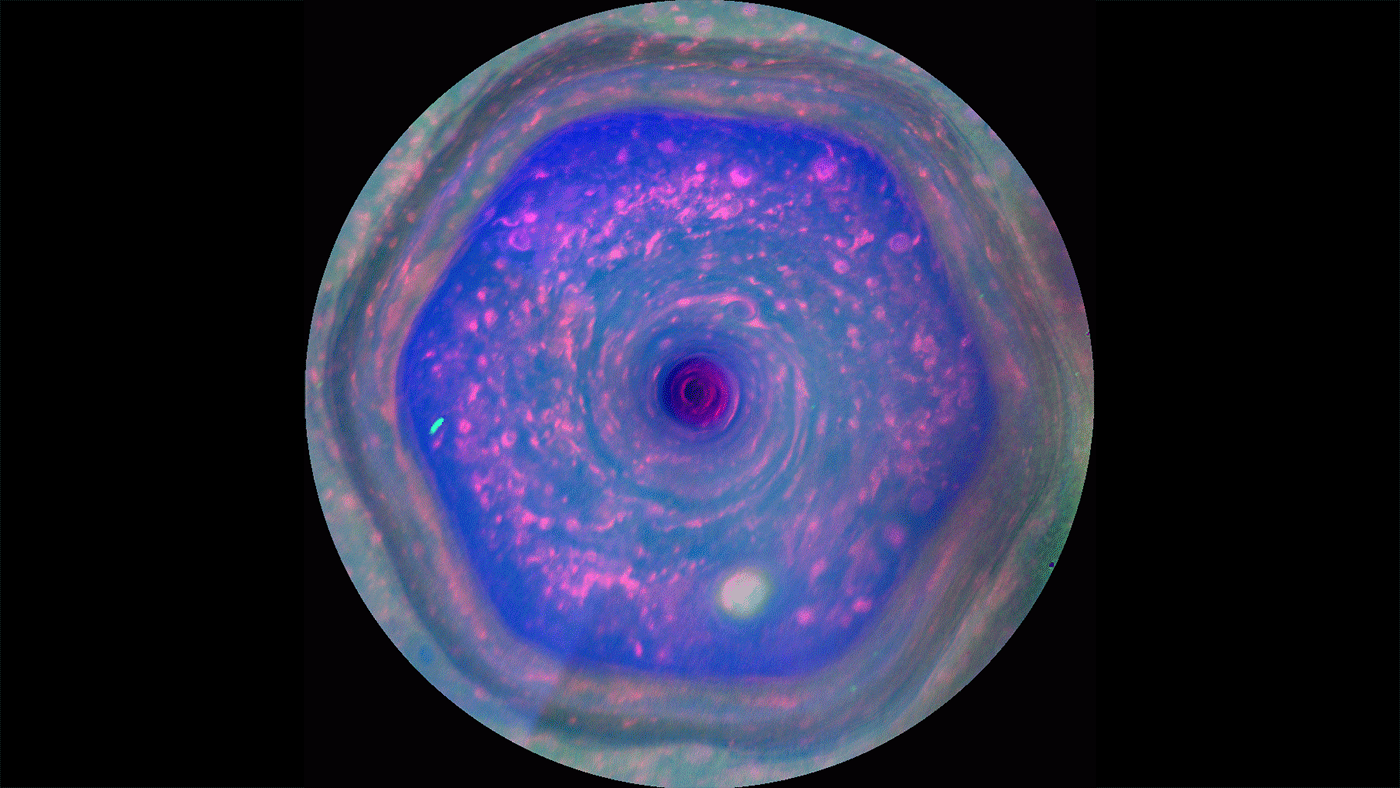
"Saturn's Hexagon" is a swirling maelstrom at the planet's north pole that, as its name implies, has an odd, hexagonal shape. The hexagon is an ever-present cloud pattern that "stands" as tall as an enormous, whirling tower on the planet. In a study this year, scientists with the Planetary Science Group at the University of Basque Country used images from the Cassini and Hubble spacecrafts to show that Saturn's hexagon is more than just a geometric oddity — the feature has its own system of hazes layered on top of one another.
He's King Henry VII, he is, he is
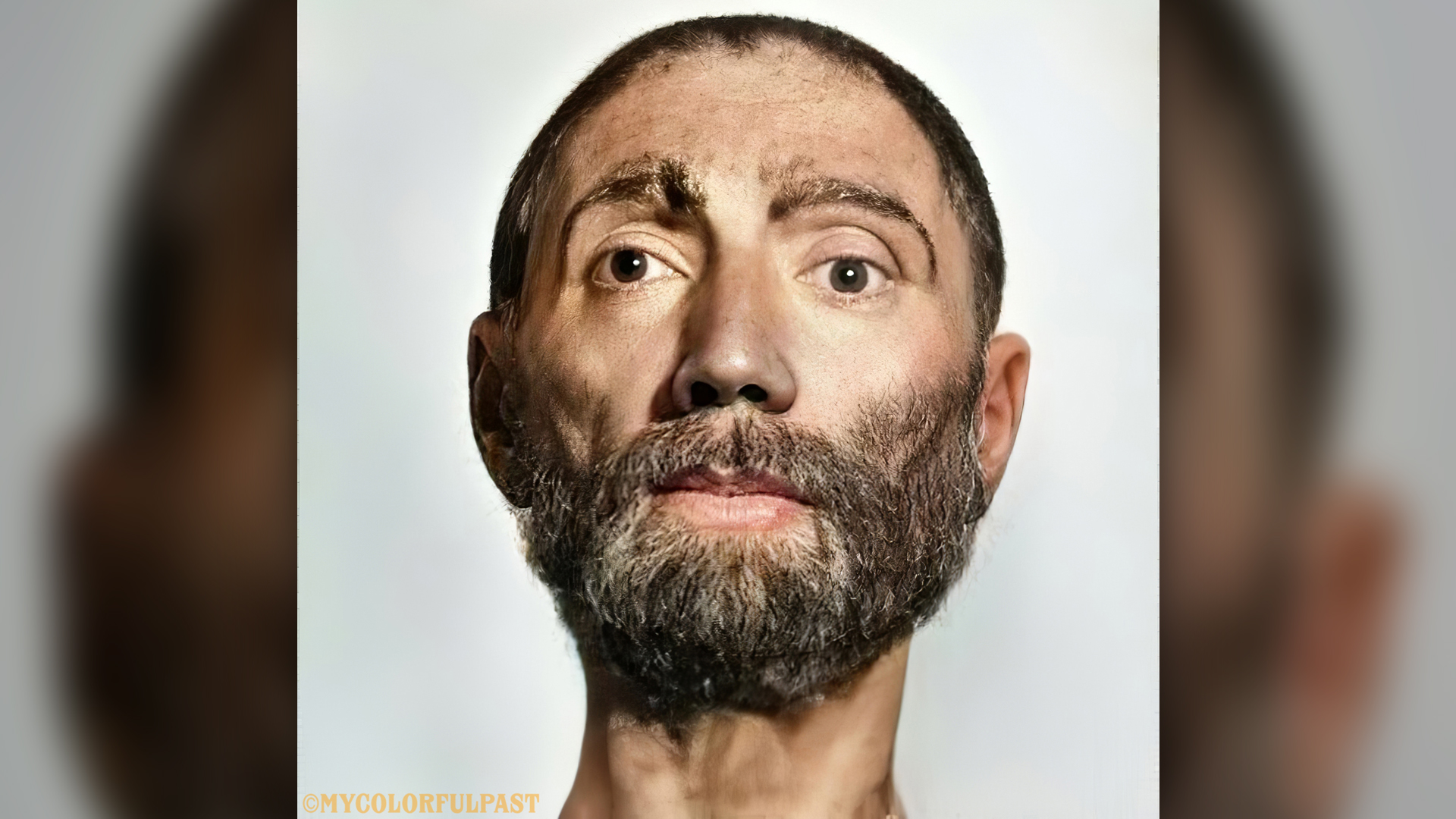
The somber face of Britain's King Henry VII was given a digital makeover, in an astonishingly photorealistic reconstruction. Graphic artist Matt Loughrey produced the image of the deceased king from Henry VII's death mask, which was cast in 1509. Long before the invention of photography, wax masks helped to preserve a person's likeness more accurately than paintings or illustrations did. Loughrey's restoration of Henry VII adds significant detail and natural colors to the molded mask impression, transporting a long-dead face from the distant past into the present.
Wolfe's disk
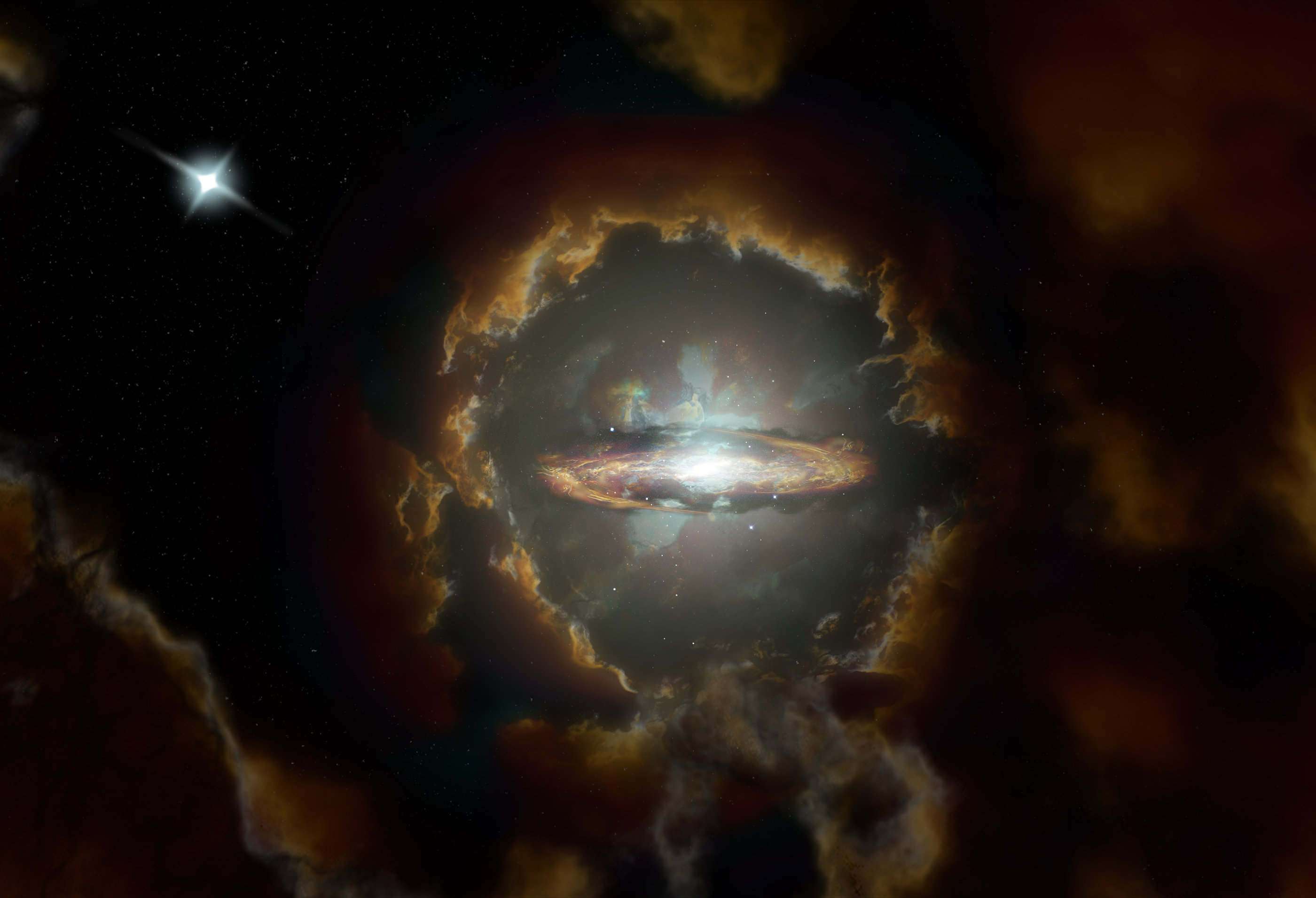
A massive, rotating disk galaxy that first formed just 1.5 billion years after the Big Bang, could upend our understanding of galaxy formation, scientists suggest in a new study this year. In traditional galaxy formation models, galaxies are built beginning with dark-matter halos that slowly build into full-fledged galaxies. But the newly discovered galaxy, nicknamed the "Wolfe Disk," which scientists believe formed in the early universe, suggests that disk galaxies could actually form quite quickly.
The (new) largest volcano on Earth

Poking out of the sea 590 miles (952 kilometers) northwest of Honolulu, Hawaii, two barren peaks rear their heads. The little pinnacles, which stand about 170 feet (52 meters) above sea level at their highest point, bely a monstrous mountain of ancient magma beneath them. Turns out, these two unassuming nubbins are actually the tips of Pūhāhonu — the single largest volcano on Earth, scientists have found.
Previously, Mauna Loa, which bulges out of Hawaii's Big Island, was thought to be the world's largest volcano. From its base on the seafloor to its summit thousands of feet over the island, Mauna Loa rises more than 30,000 feet (9,170 m) and encompasses more than 19,200 cubic miles (80,000 cubic km) in volume. However, researchers found that Pūhāhonu contains approximately 36,000 cubic miles (150,000 cubic km) of rock — giving it a volume more than twice that of Mauna Loa.
The Twitter parasite

Researchers have discovered a parasitic fungus that sucks nutrients out of the reproductive organs of millipedes. They named it after Twitter. Meet Troglomyces twitteri. This near-microscopic parasite looks like a larva and is about 100 micrometers long — comparable to the average diameter of a human hair. Each spore spends its entire lifecycle hanging around the genitals of a single male or female millipede. As for the name? The novel fungus was discovered when scientists were sharing millipede pics on Twitter (as one does).
Tubby pygmy hippo pup
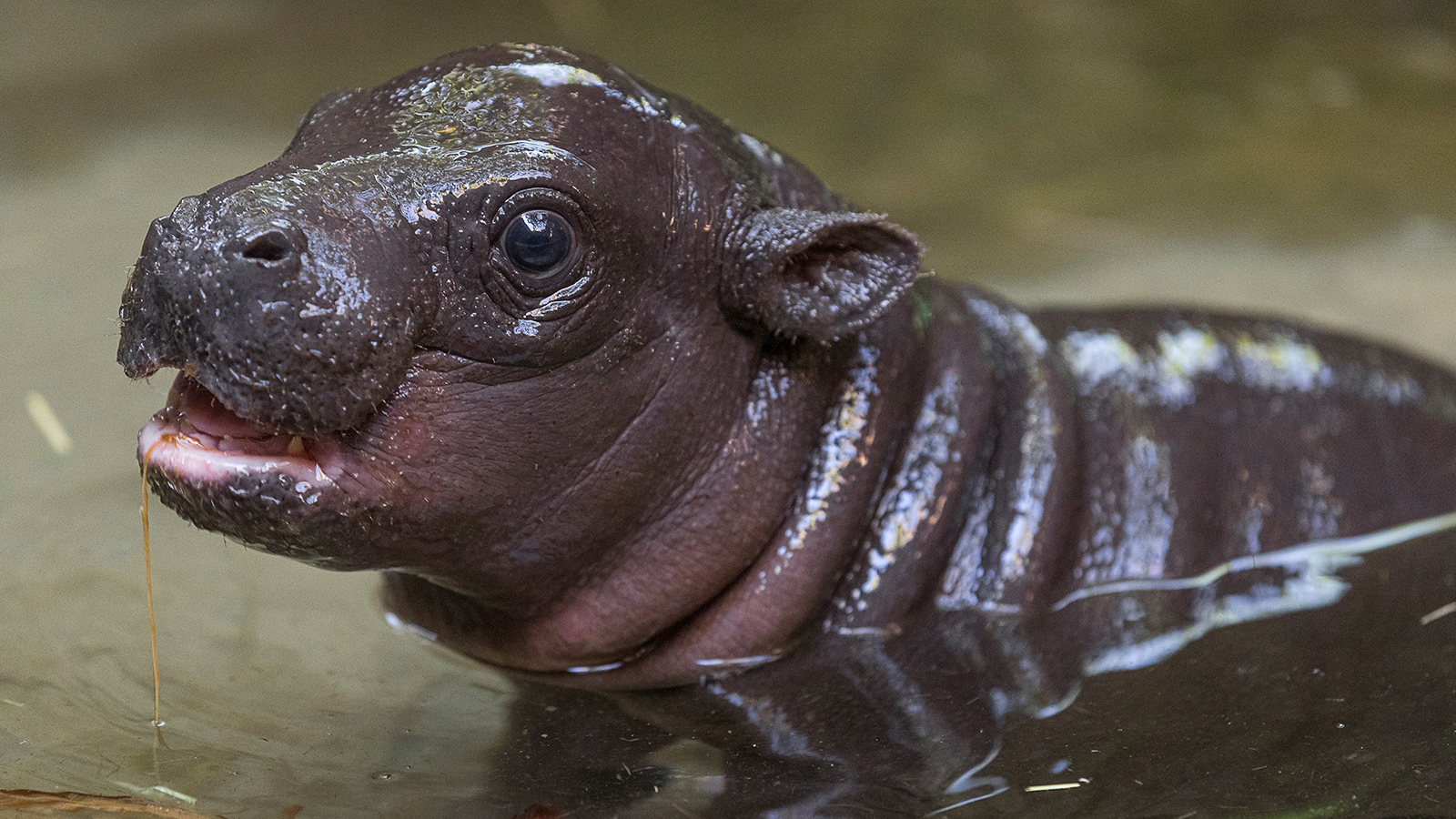
In May, the San Diego Zoo recently announced its newest (and arguably cutest) arrival: a newborn male pygmy hippo, born on April 9 to its 4-year-old pygmy hippo mama Mabel. Within hours of birth, the very tubby youngster was standing up and following its mother around, toddling after her in the hippos' indoor habitat, zoo representatives said in a statement.
A newborn planet, with a twist

The European Southern Observatory captured an image of a planet being born around the young star AB Aurigae, which lies 520 light-years from Earth in the constellation Auriga (The Charioteer). Like previous AB Aurigae images, this new photo shows spiral arms forming in the thick disk of dust and gas surrounding the star. These spirals are evidence of newly forming worlds, which churn up protoplanetary disks, scientists have said. But the new view adds something different and more detailed: a twist in those spiral arms. This twist likely pinpoints the spot where the exoplanet is taking shape, researchers report in a new study describing the observations.
Sauron's galaxy

Eleven billion years ago, a hot, active, galaxy that looked like an eye glared across space. Now, using data from the W.M. Keck Observatory in Hawaii and the Hubble Space Telescope, astronomers have captured a snapshot of its unblinking gaze. This galaxy, R5519, is made up of a flat ring of stars, with a hole in the middle where astronomers believe another blob of stars punched through. Galaxies like this, known as "collisional ring galaxies," turn up infrequently in the modern universe. But this is the first time astronomers have seen one so old and far away; at 11 billion light-years from our planet, its ancient light is only just reaching Earth.
Cannibal dinos grab a bite
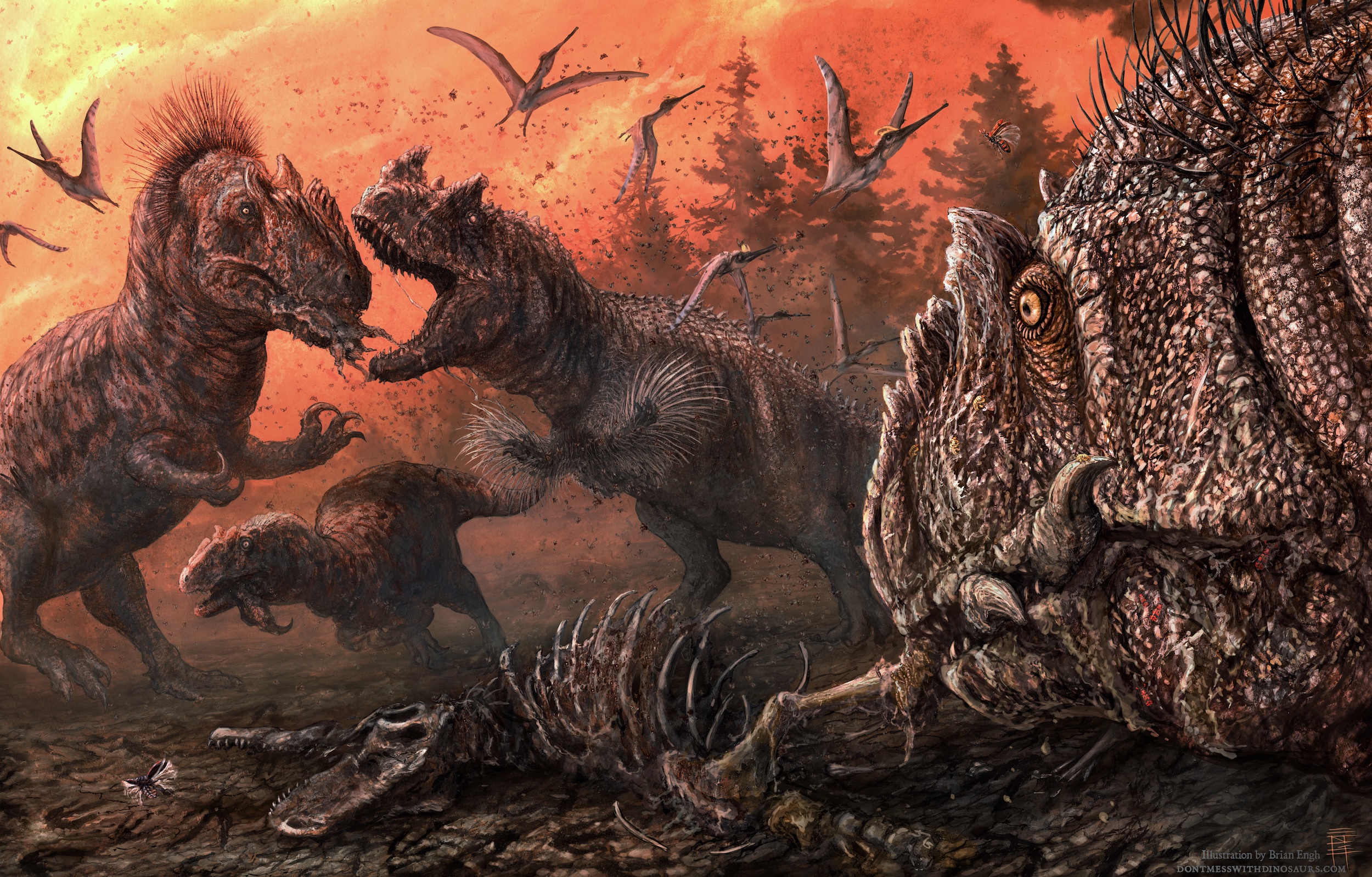
Scientists have discovered rare fossil evidence of dinosaur cannibalism in a large quarry in Colorado. In a new study published May 27 in the journal PLOS ONE, researchers examined more than 2,000 dinosaur bones from the Mygatt-Moore Quarry near the Utah-Colorado border, paying close attention to any bite marks that were present. Many bones bore the bites of theropod dinosaurs (a large group of bipedal carnivores). In some cases, the team wrote, both the biter and the bitee were of the same genus — the predatorial Allosaurus — providing some "extremely rare" fossil evidence of dinosaur-on-dinosaur cannibalism.
Through the viral 'stargate'

Giant viruses, which measure about 10 times the size of a typical cold virus, infiltrate cells and inject their DNA through a special portal known as a "stargate." Now, detailed new images have revealed what conditions prompt this stargate to open and drive the viruses to infect. Shaped like a splayed starfish with five legs, the stargate lies on the surface of a virus and remains sealed during much of its life cycle. But once inside a host cell, each leg of the stargate "unzips", allowing viral genetic material to slip through the resulting hole.
The world's oldest temple, revealed

Hunter-gatherers might have built the world's oldest known temple on a precise geometric plan, according to new findings. The Neolithic site, known as Göbekli Tepe, is perched atop a limestone mountain ridge in southeastern Turkey, where it was built some 11,000 to 12,000 years ago (6,000 years before Stonehenge). Using a computer algorithm to analyze the underlying architecture of the site, researchers found that many of the site's pillars and circles were aligned, suggesting a planned geometric design.
The world's oldest parasite

More than 500 million years ago in what is now southern China, tubelike parasites clung to the shells of tiny sea creatures called brachiopods and slurped up their hosts' meals. These ancient Cambrian fossils have preserved the oldest known example of parasites in action. Brachiopods are sessile suspension feeders, which means they live fixed in place and capture drifting food particles that are suspended in water. The alignment of the tube-shaped creatures in the newly described fossils suggests that the parasites positioned themselves to intercept food as it flowed toward their host, scientists reported in a new study.
Undersea emperors of snot
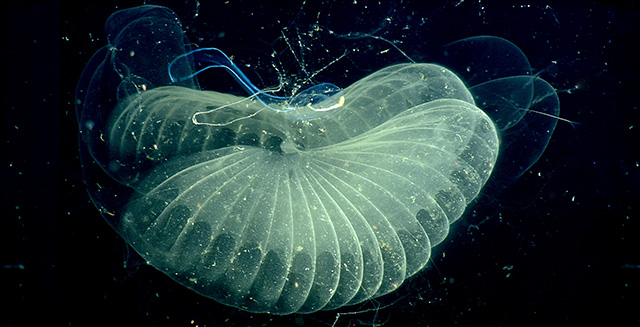
Hundreds of feet below the sea surface, teeny-tiny sea creatures secrete snotty blobs from cells on their heads to build their oversized mucus dwellings. With lasers, researchers are now peering inside these impressive structures to learn the delicate craft of these deep-sea architects. These tadpole-looking sea animals are called giant larvaceans (Bathochordaeus); despite their name, the animals are less than 4inches (10 centimeters) long. But their homes are another story: they each carry around a giant mucus bubble that can reach up to 3.3 feet (1 meter) long. Once the critters secrete these impressive structures — made up of an inner and outer filter — they use them as a feeding apparatus.
The sleeping dragon's final meal
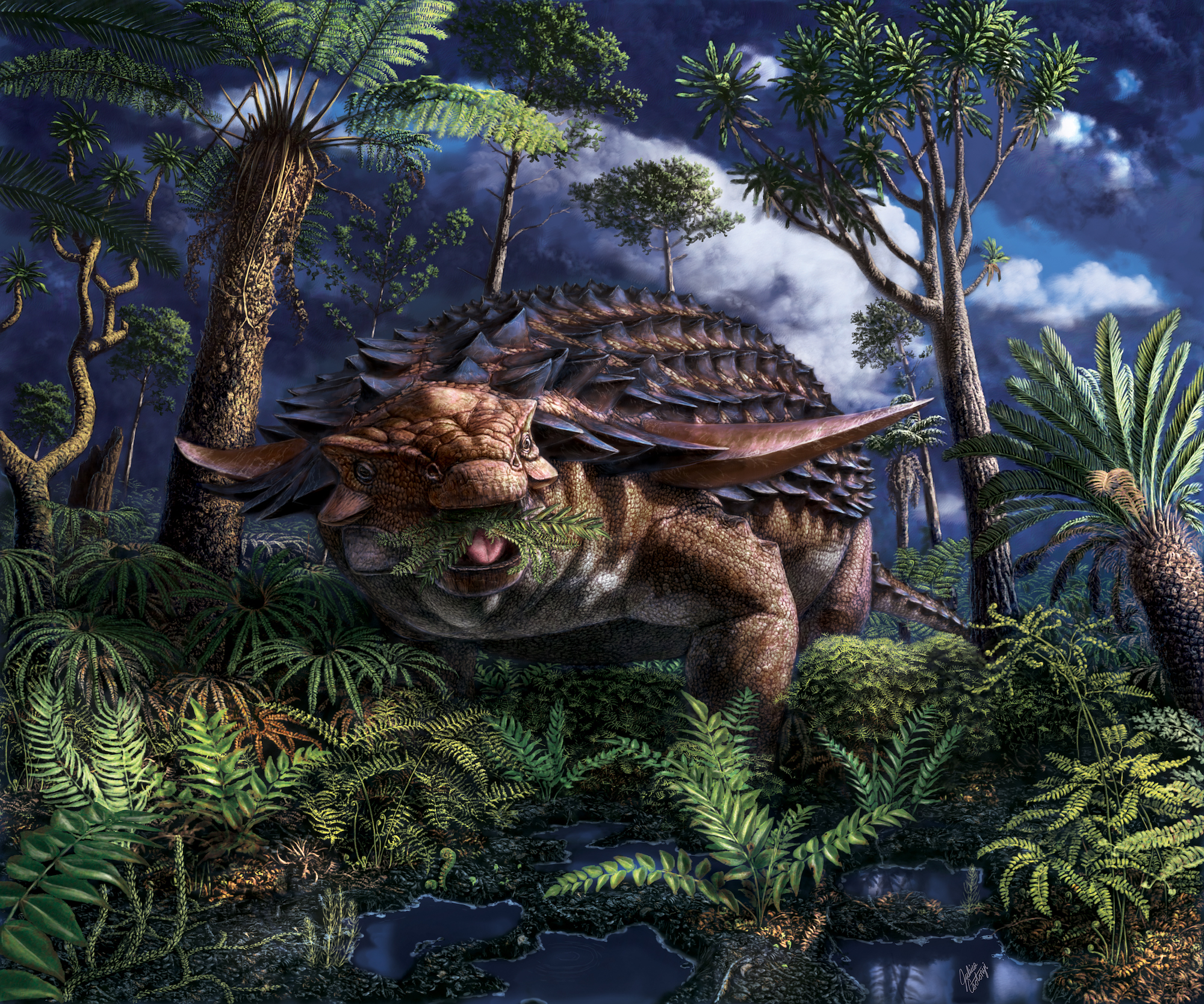
The last meal of the 3,000-lb. (1,360 kilograms) "sleeping dragon" dinosaur is so beautifully preserved, scientists now know exactly what the armored beast ate before it died about 112 million years ago, a new study finds. An analysis of its fossilized soccer-ball-size stomach contents reveals that this dinosaur, known as Borealopelta markmitchelli, was an extremely picky eater. It ate ferns, but only certain types, and only select parts of those plants. The researchers found that leaves accounted for nearly 88% of the plant material in the dino's gut, and less than 7% comprised stems and wood. Charcoal accounted for about 6%.
Deep-down dumbo
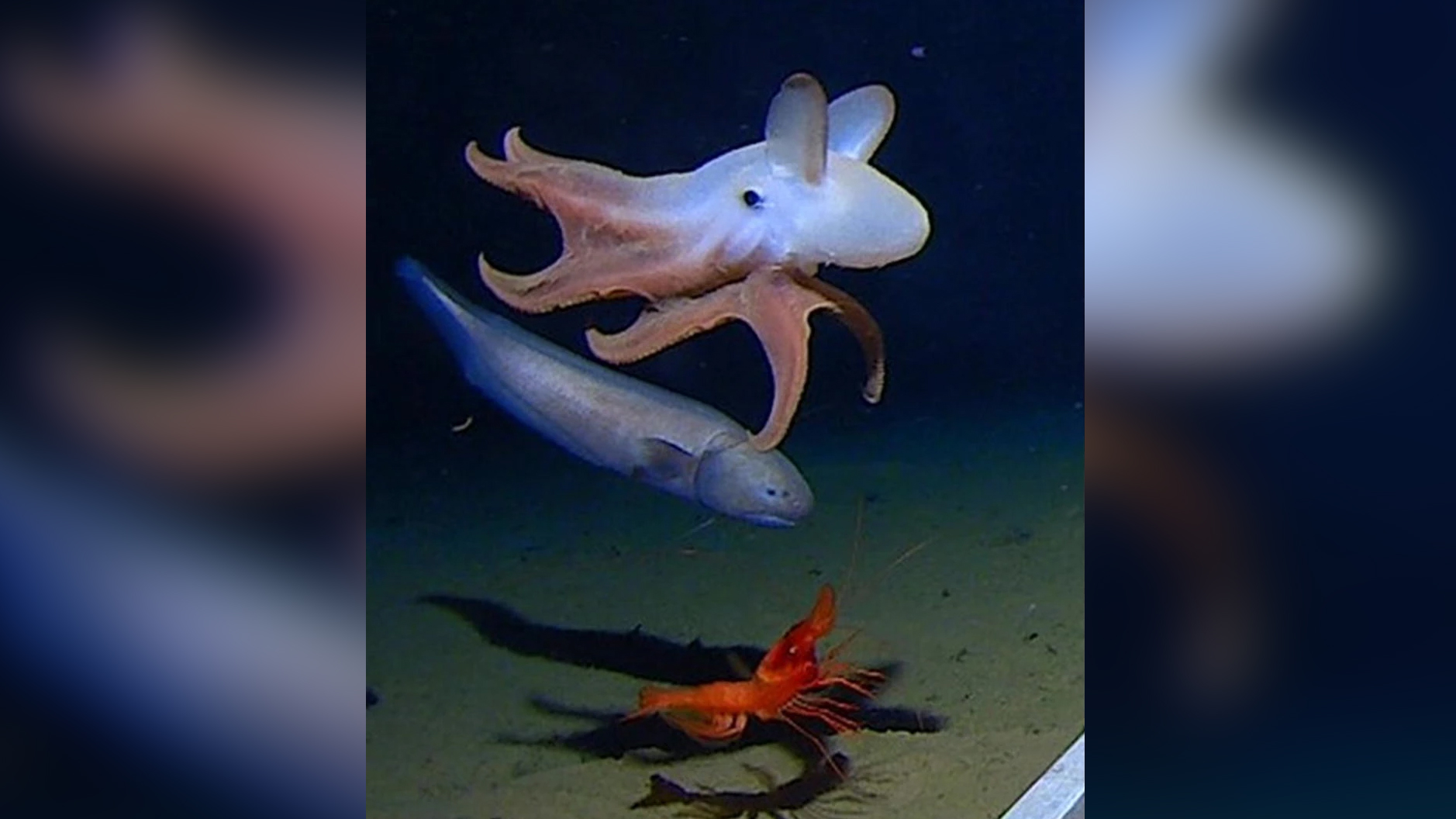
Explorers have captured video of the deepest-known octopus, revealing an adorably pudgy Dumbo octopus some 4.3 miles (6,957 meters) beneath the surface of the Indian Ocean swimming in what is called the hadal zone, where not even a drop of sunlight can penetrate. The dumbo octopus (genus Grimpoteuthis), with its wee size and two relatively large fins that look like the eponymous Disney character's ears, is often called "the cutest octopus in the world," according to National Geographic. It's also one of the deepest-known octopuses, known to live more than 2 miles (3,200 m) below the ocean's surface.
A shark-on-squid brawl
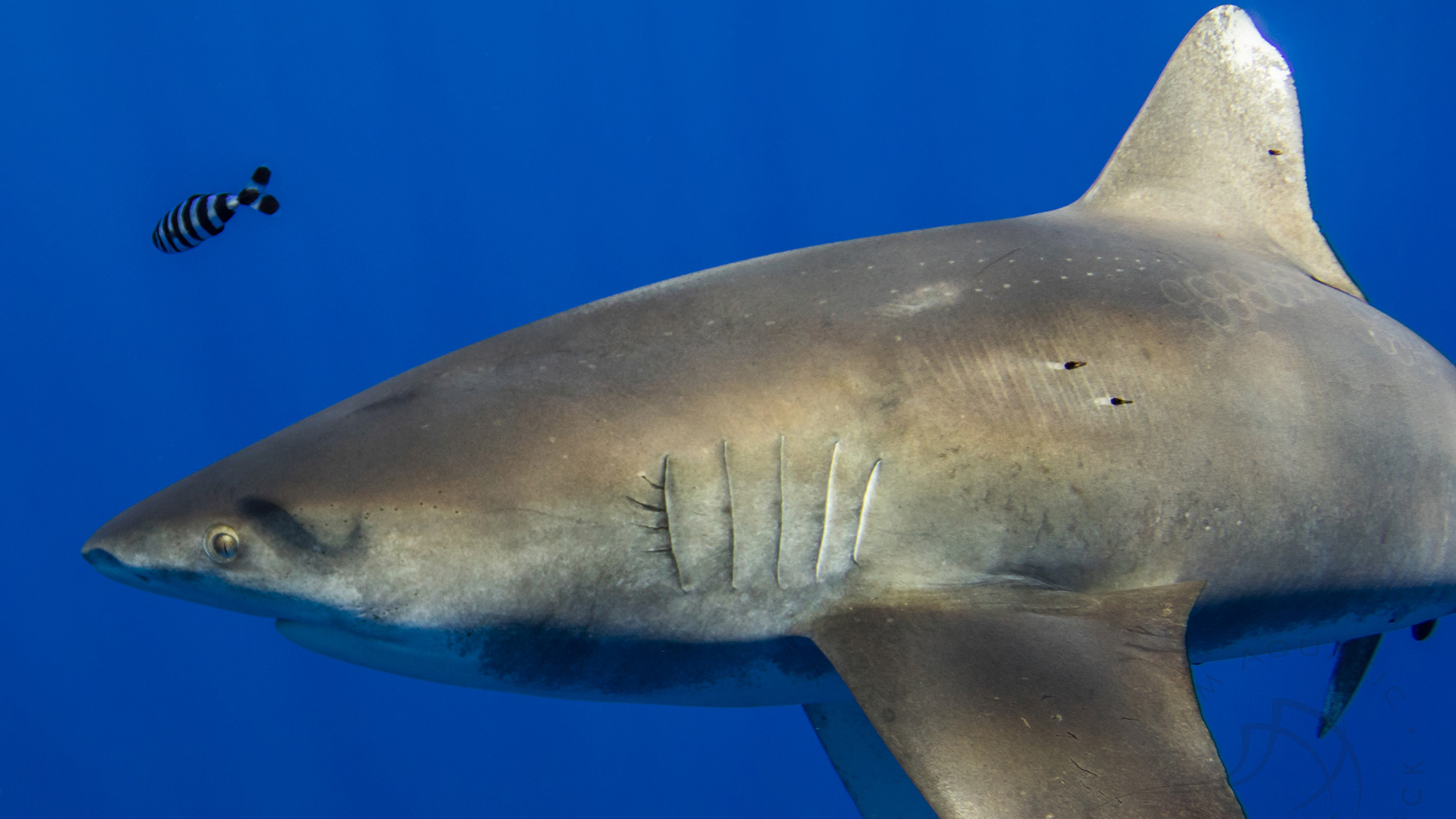
A rare, multispecies brawl unfolded in the deep ocean off the coast of Hawaii. In one corner, an oceanic whitetip shark (Carcharhinus longimanus) — a 7-foot-long (2.1 meters) predator capable of diving up to 1,000 feet (300 m) below the surface in pursuit of prey. In the other corner… it's not clear. But whatever it was, it was huge, it had tentacles and it put up a hell of a fight. Undersea photographer Deron Verbeck caught the aftermath of this mysterious scrap when he snapped a picture of the offending shark, scarred all along its flank with strange circular patterns and dots. There are only a handful of creatures in Hawaiian waters capable of creating scars like that, researchers said, including the elusive giant squid (Architeuthis dux).
A giant squid, all washed-up
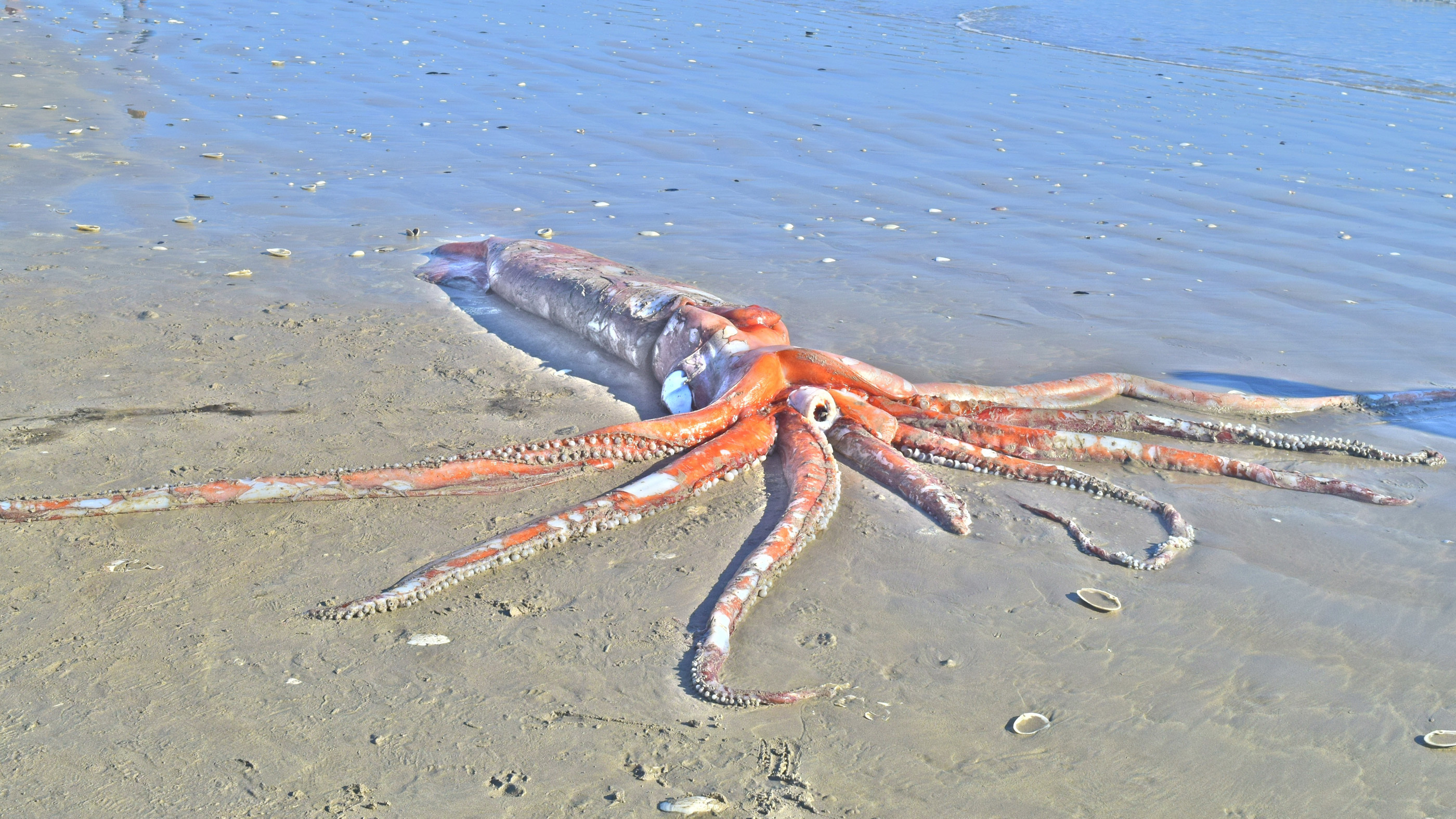
Meanwhile, beachgoers in South Africa discovered one such squid (Architeuthis dux, the fabled giant squid) scattered among the seashells near Cape Town this week. The squid was found remarkably in-tact, and probably measured more than 13 feet (4 meters) long and weighed more than 660 lbs. (330 kilograms). Remarkably, that's actually on the shrimpier side for a giant squid; females of the species can reach up to 60 feet (18 m) long, according to a 2013 study.
A 'Wall' of matter in the southern sky

Spectacular 3D maps of the universe have revealed one of the biggest cosmic structures ever found — an almost-inconceivable wall stretching 1.4 billion light-years across that contains hundreds of thousands of galaxies. The South Pole Wall, as it's been dubbed, has been hiding in plain sight, remaining undetected until now because large parts of it sit half a billion light-years away behind the bright Milky Way galaxy — a region called the Zone of Galactic Obscuration. By measuring the velocity of galaxies hidden in this zone, the authors of a July study calculated approximately how much matter was lurking there.
A red mine in the abyss
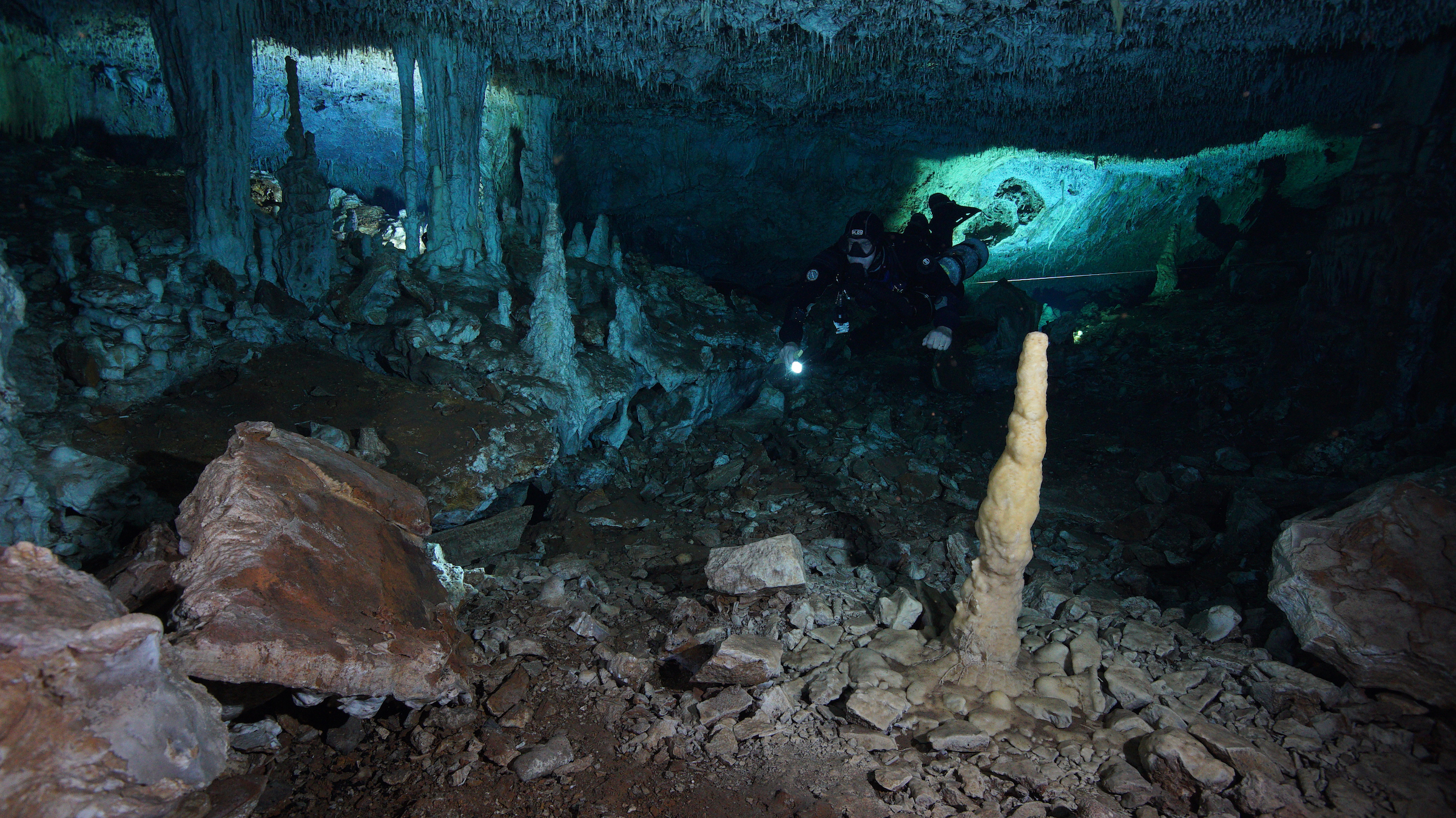
At the end of the last ice age, Indigenous miners in what is now the Yucatan Peninsula, Mexico risked life and limb — venturing into pitch dark caves illuminated only by fire — to extract a prized mineral, a new study finds. That mineral wasn't gold or diamonds, but red ochre, a valuable crayon-like pigment that prehistoric people used for both ritualistic and everyday activities, including rock paintings, burials and possibly even insect repellent. Cave divers discovered the ancient mining camps in April 2017 after following a previously undocumented passageway, and published a study describing it this year.
Corona tentacles

Cells infected with the new coronavirus grow stringy, tentacle-like arms that allow the virus to invade other cells, according to a July study. In a study of more than 300 human proteins, the team took high-resolution images of infected cells revealing that the cells had grown tentacle-like protrusions called "filopodia," which contained viral proteins. Those tentacles then poke holes in nearby cells, allowing the virus to infect new cells, according to the researchers.
Tardigrades on the sun?

Could a tardigrade — nature's most notoriously resilient animal — survive a trip to the sun? Not bloody likely. But that didn't stop solar scientists from nicknaming a wee, wiggling splotch on the sun after the animal during a recent analysis of Solar Orbiter data. The blotchy tardigrade was, in fact, the result of a sensor defect on the Solar Orbiter, NASA and ESA researchers said.
Tails you lose
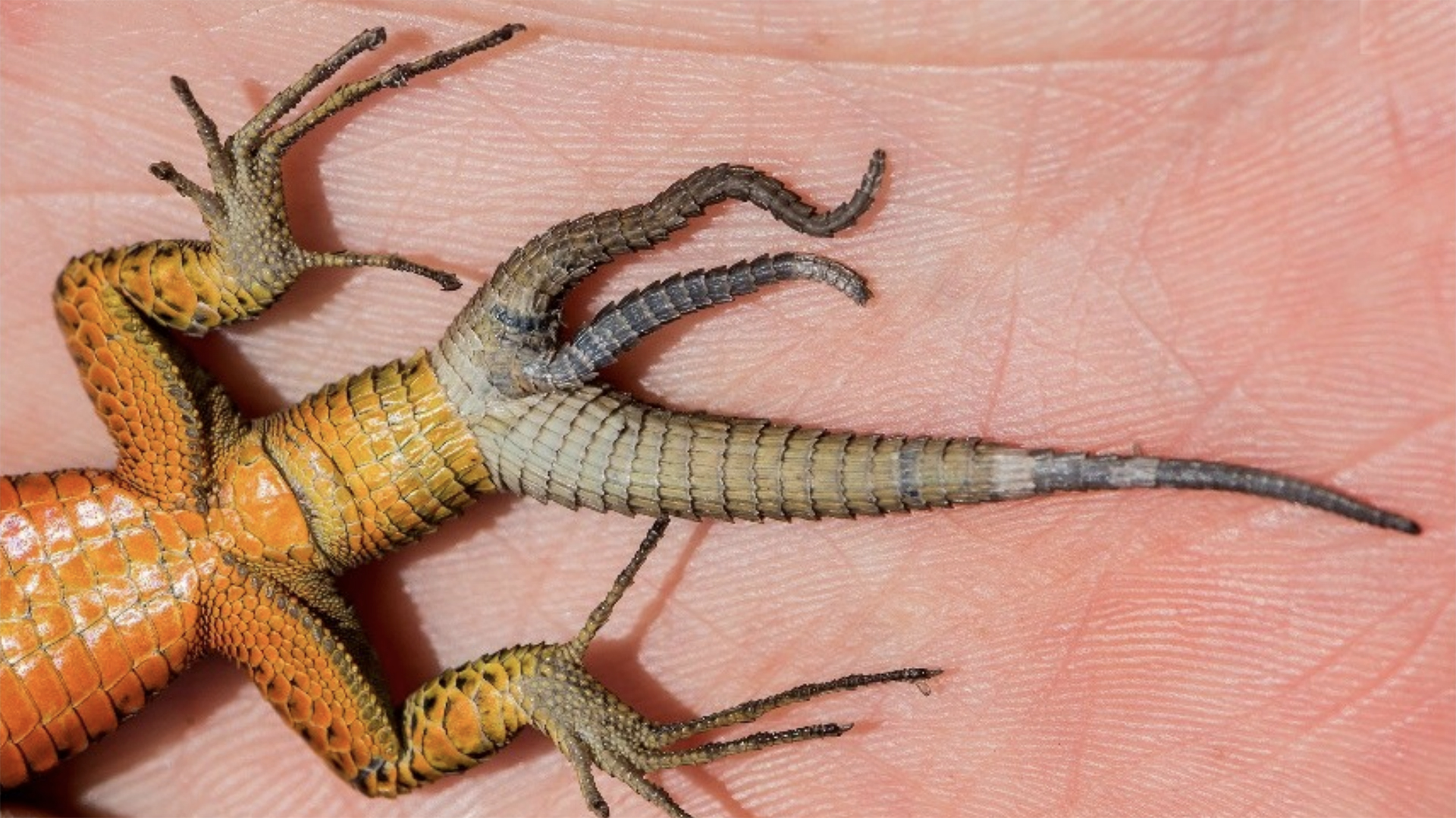
When some lizards lose their tails, they can grow back another one. No problem. However, sometimes an injured lizard doesn't stop at one new tail… they grow back two, or three, or even six. Big problem. Remarkably, poly-tailed lizards may be far more common than we know. In a new survey of hundreds of scientific records and anecdotes dating back more than 400 years, researchers found evidence of multi-tailed lizard sightings for more than 175 species in 63 countries. The team estimated that as many as 3% of all lizards may be multi-tailed.
Murder most owl

A 55 million-year-old owl fossil with "murder feet" was described in August. Based on its preserved foot bones, this ancient avian predator likely hunted like a hawk — killing its prey with piercing talons — unlike its modern-day relatives that use their beaks to kill. The newfound skeleton, which represents a previously unknown owl genus and species, is the oldest near-complete owl fossil (dating to approximately 55 million years ago), according to a new study.
The vampire tongue-eater
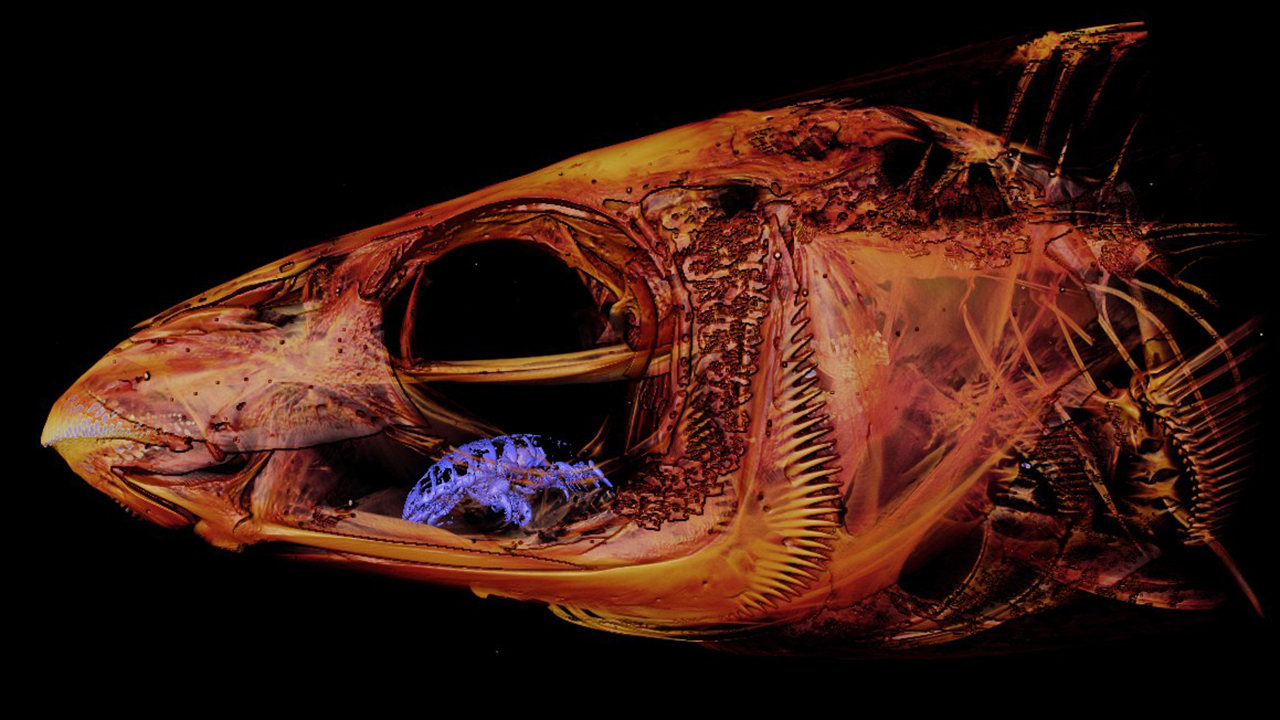
When scientists recently X-rayed a fish's head, they found a gruesome stowaway: A "vampire" crustacean had devoured, then replaced, its host's tongue. The buglike isopod, also called a tongue biter or tongue-eating louse, keeps sucking its blood meals from a fish's tongue until the entire structure withers away. Then the true horror begins, as the parasite assumes the organ's place in the still-living fish's mouth. There are about 380 species of tongue-eating isopods, and most target a specific fish species as their host, according to the Two Oceans Aquarium in Cape Town, South Africa.
The bald bum of crime
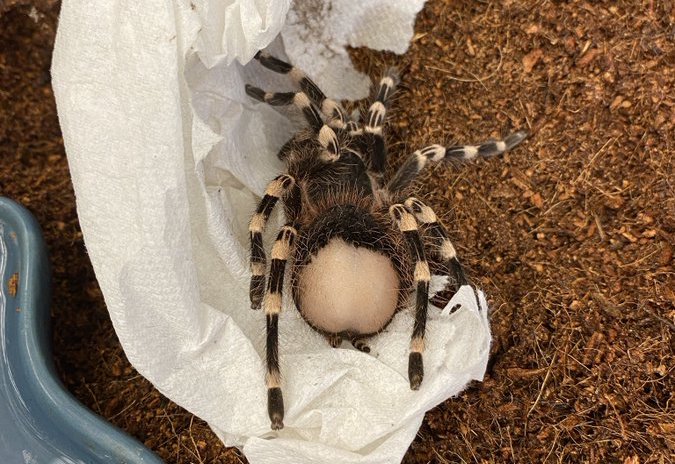
Tarantulas, like all things hairy, sometimes go bald. And for the Brazilian whiteknee tarantula (Acanthoscurria geniculata), baldness starts with the butt. On Aug. 6, entomologist Gwen Pearson tweeted a photo of what that looks like. The pink-rumped spider (named "Lil' Kim" after the rapper who has sported pink hair) does not owe its bare badonkadonk to age; according to Pearson, the specimen is less than 2 years old and may not reach adulthood until she's 5. Rather, Kim's bald butt is the result of a natural tarantula defense mechanism — and proof of the physical stress that illegal animal trafficking incurs.
Vader of the deep

Buglike marine creatures that skitter across the sea bottom can grow to be as big as puppies, and a newly described species is one of the largest ever seen. These crustaceans are known as isopods; the order Isopoda includes around 10,000 species that live in diverse habitats on land and in the ocean, and they can range in size from just a few millimeters to nearly 20 inches (500 mm) long. Of the ocean-dwelling isopods, the genus Bathynomus contains the biggest species; the newfound isopod, which turned up in the Indian Ocean in 2018, is among the largest of the Bathynomus species ever seen in the wild.
Mummy kitten surprise
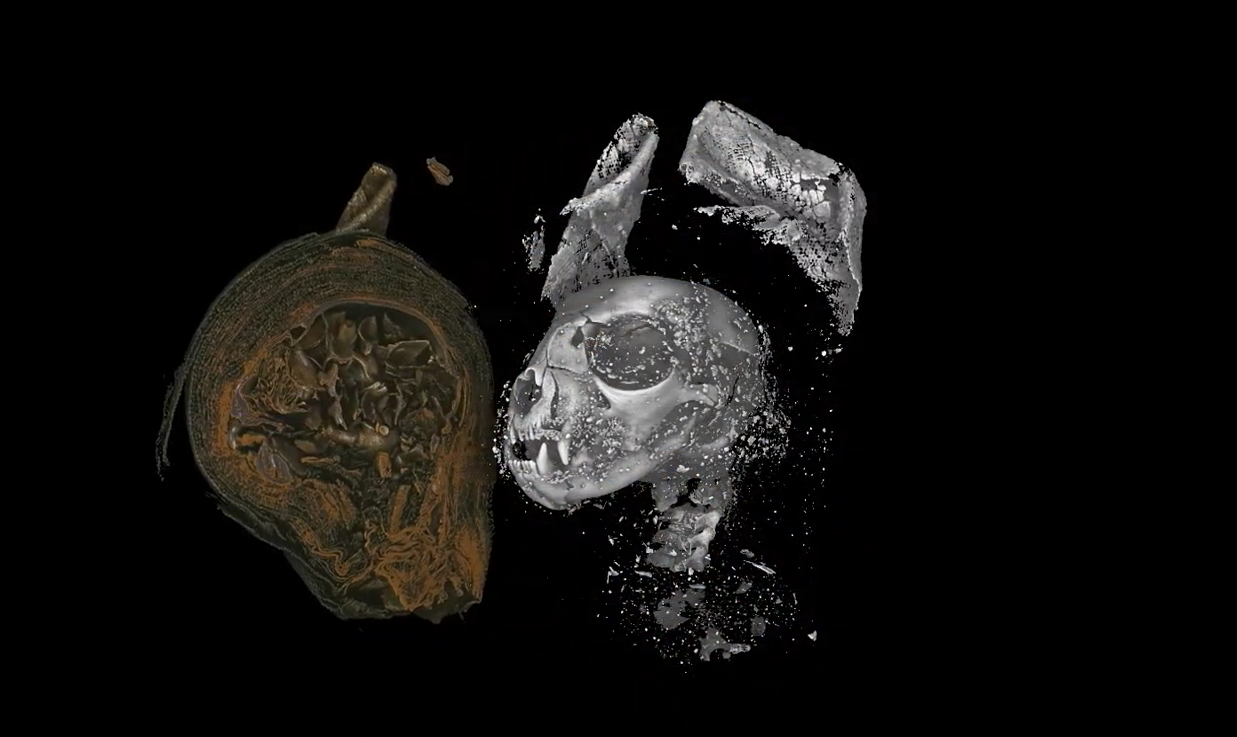
As many as 70 million animals were mummified in ancient Egypt between roughly 700 B.C. and A.D. 300., though the practice remains largely mysterious today. In August, researchers used a non-invasive imaging technique called X-ray micro CT scanning, to create 3D digital images of three ancient animal mummies — a cat, a bird and the aforementioned cobra — revealing how the creatures lived and died in unprecedented detail. The cat, for example, was found to be a kitten younger than 5 months old, based on the development of its teeth and bones. Breaks around the feline's neck suggest it was strangled to death before its mummification, according to the study.
Reptilian parenting goals
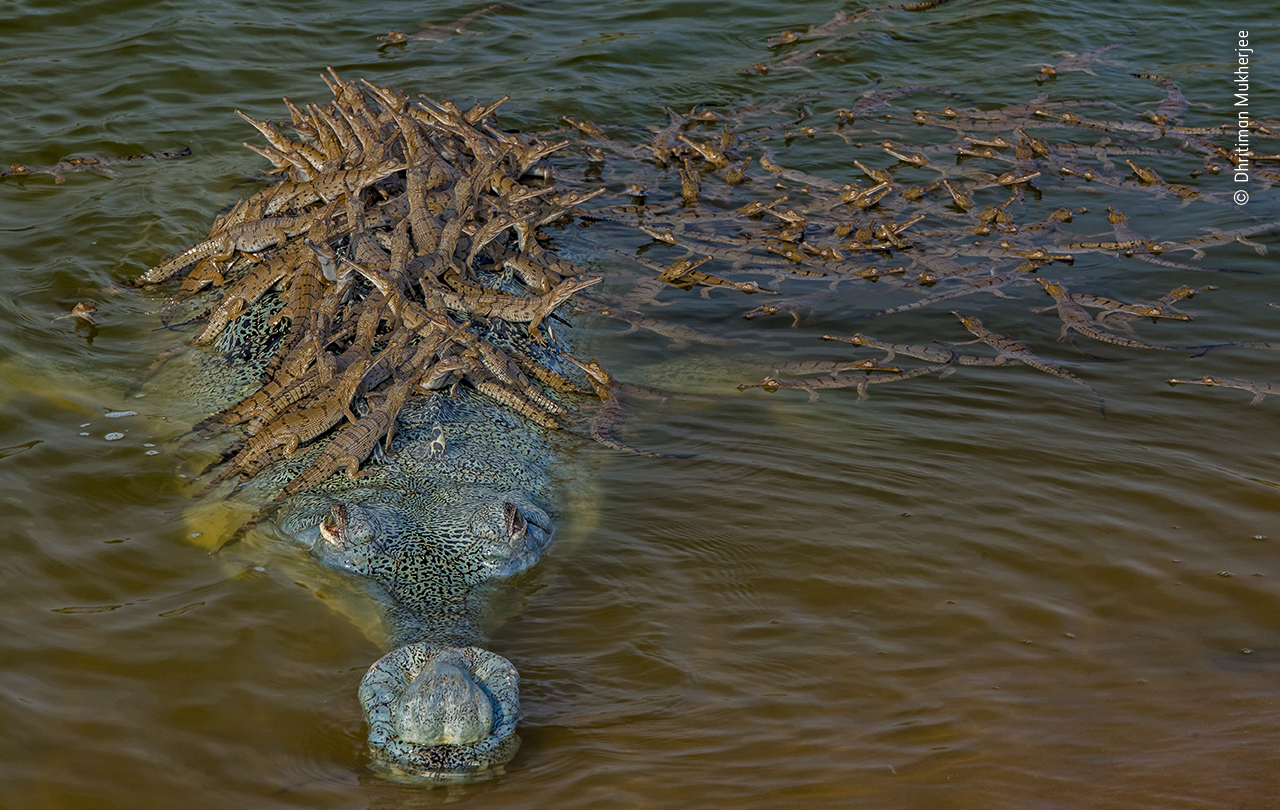
Picking the kids up from school takes on a different meaning for crocodylian parents. In this photo, taken by India-based photographer Dhritiman Mukherjee, a male freshwater gharial shows us why. Bobbing in the waters of northern India's National Chambal Sanctuary, the croc waits as more than 100 of his month-old children clamber onto his back for safe passage.
Beauty sleep for a Seussian beast

Some 250 million years ago, a Seussian-looking beast with clawed digits, a turtle-like beak and two tusks may have survived Antarctica's chilly winters not by fruitlessly foraging for food, but by curling up into a sleep-like state, meaning it may be the oldest animal on record to hibernate, a new study found. Analysis of this Triassic vertebrate's ever-growing tusks revealed that it may have spent part of the year hibernating, a strategy that is still used by modern animals to tough out long winters.
"Andromeda at arm's length"

The Andromeda galaxy lies 2 million light-years from Earth, but it looks close enough to touch in an image that took home the top prize in the Royal Observatory Greenwich's Insight Investment Astronomy Photographer of the Year 2020 competition. French photographer Nicolas Lefaudeux used a technique called tilt-shift — positioning a camera's lens in a way that manipulates the depth of field in an image — to bring our closest neighboring galaxy closer still.
The mummy's mugshot

Just after the turn of the first millennium A.D., a young child living in Egypt contracted a deadly illness and died. His tiny body was prepared for mummification and burial; some of his organs were removed, his remains were wrapped in criss-crossed linen bindings and a portrait of his face was affixed to the front of his mummy. This so-called "mummy portrait" was part of a popular tradition among some Egyptians in Greco-Roman times, from about the first through the third centuries A.D. But how accurate were these portraits? To find out, a team of scientists CT scanned this little boy's body and created a 3D digital reconstruction of his face.
Funniest animals on film

Feast your eyes on some of the most amusing animal photos ever, as the finalists are unveiled for the Comedy Wildlife Photography Awards 2020. The competition is designed to raise awareness of the need for conservation, and it's run in association with Born Free. This year's overall winner was this picture of a sea turtle with very 2020 energy, photographed by Mark Fitzpatrick. "I was swimming with this turtle at Lady Elliot Island on the Great Barrier Reef when he flipped me the bird!" said Fitzpatrick.
The naked shark of Sardinia
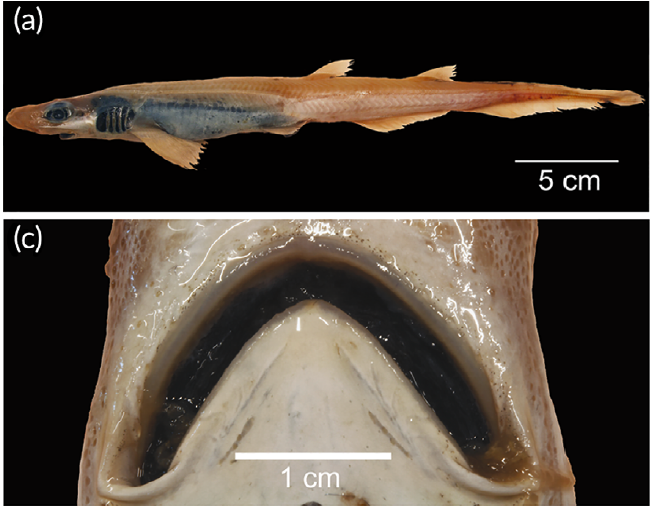
In July 2019, fishers trawling the Mediterranean Sea south of Sardinia, Italy, accidentally pulled a mutant from the depths. Ensnared in their net among hundreds of other fish, sharks and assorted marine life was a blackmouth catshark (Galeus melastomus) — seemingly born without skin or teeth. While scientists have reported numerous cases of albinism, discoloration and other genetic skin mutations in sharks before, this rare catch is the first and only known case of a shark living with a "severe lack of all skin-related structures [including] teeth," according to a study published this year in the Journal of Fish Biology.
A saucer in the sky
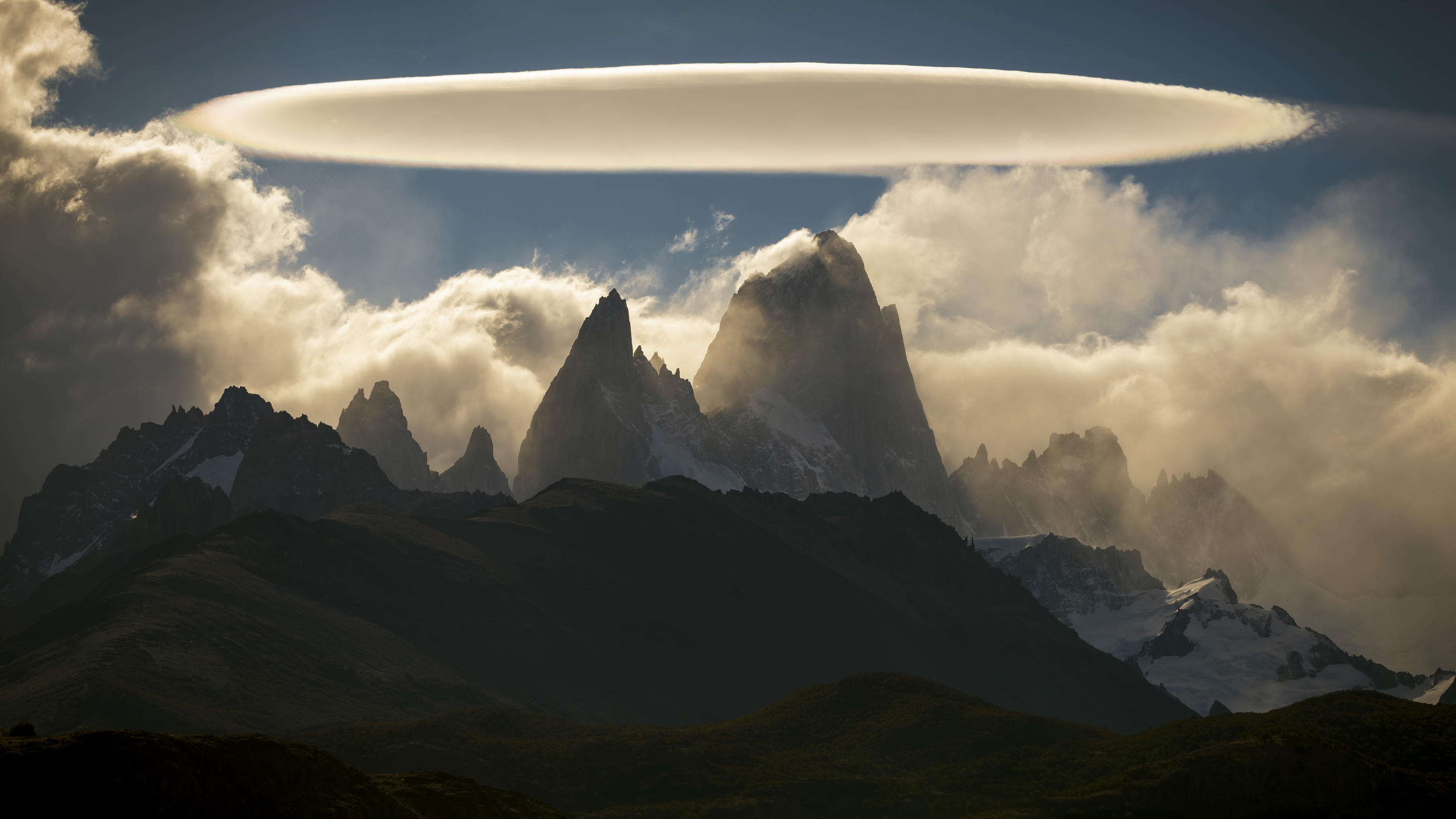
A ghostly white saucer hovers over the peaks of El Chaltén in southern Argentina. It's not aliens. (Sorry … it's never aliens). It's just a friendly neighborhood "UFO cloud" — better known in meteorological circles as a standing lenticular cloud. This type of cloud is relatively common in mountainous regions like El Chaltén, or the Rocky Mountains in the U.S., where high-speed winds ricochet over a tall peak, creating a distinct lens- or saucer-shaped cloud formation high in the sky.
Nazca cats

Archaeologists have discovered a gigantic cat geoglyph adorning a hillside in southern Peru, making it the latest of the Nazca Lines — a group of mysterious and enormous human-made outlines of animals, plants and fantastic figures in the desert dating to Pre-Columbian times — to be uncovered in recent years, according to Peru's Ministry Of Culture.
The unicorn of birds

Biologists recently made a "once-in-a-lifetime" discovery of a bird that's male on the right side and female on the left. Researchers captured the bird, a rose-breasted grosbeak (Pheucticus ludovicianus), at the Carnegie Museum of Natural History's Powdermill Nature Reserve, an environmental research center in Rector, Pennsylvania. Plumage colors usually signal if a grosbeak is male or female, but this bird has both sexes' signature shades.
Hornets, murdered

Eleven months after murder hornets were first discovered in the United States, entomologists tracked down and destroyed the first nest of this invasive, venomous species. The Asian giant hornet (Vespa mandarinia) nest was found on private property in Blaine, Washington, on Oct. 23. On Saturday, state Agriculture Department crews donned protective suits and vacuumed the stinging insects out of the hive. Next, the tree where the hive was found will be cut down so that crews can search for any baby hornets and determine if any queens may have departed to start new hives in the area.
Two heads, one snake
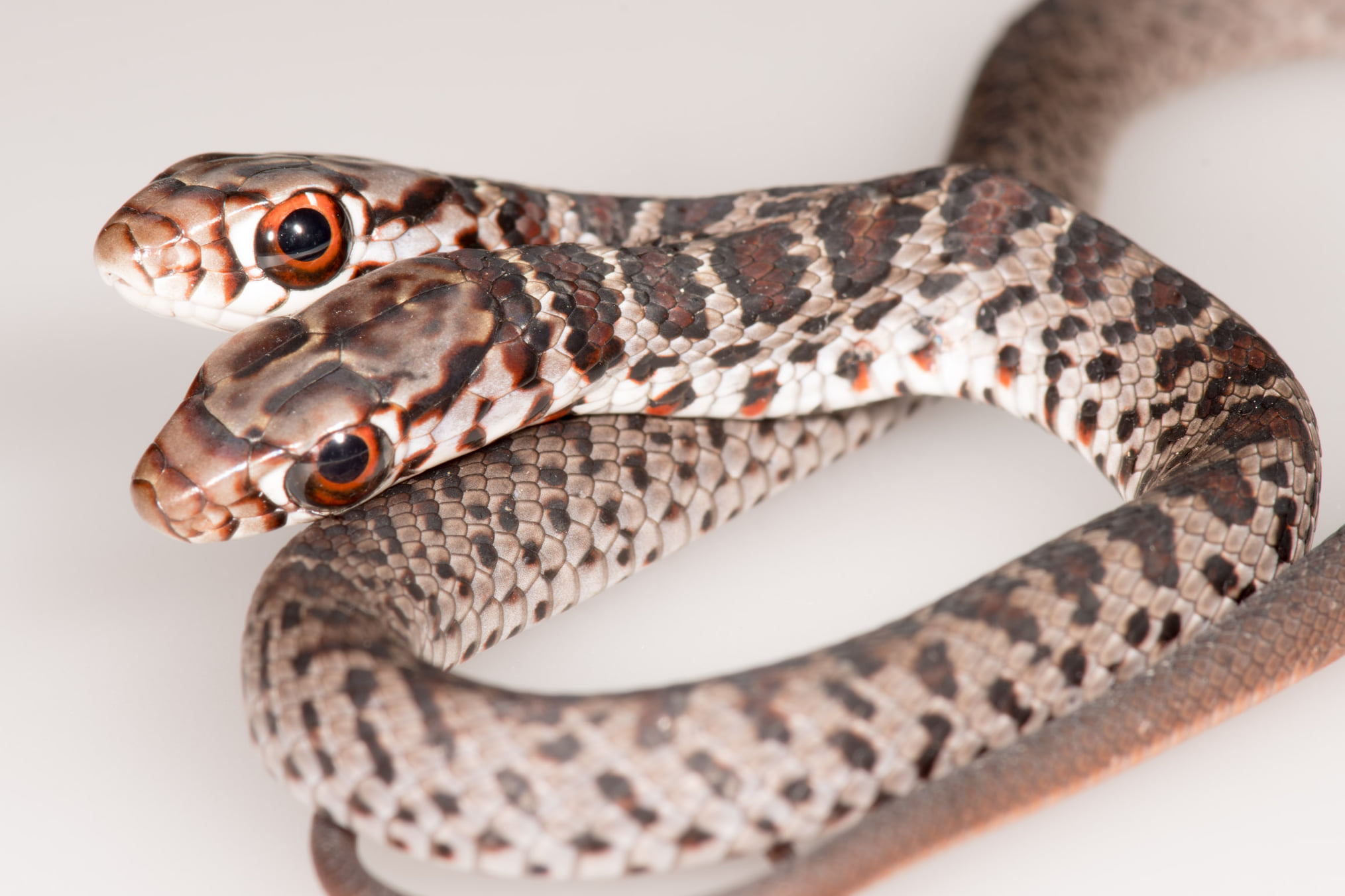
What has two brains, no legs and the best profile pic on Facebook? That would be this rare, two-headed racer snake recently discovered by a house cat in Palm Harbor, Florida. This condition — known as bicephaly — is an uncommon abnormality that occurs during embryonic development, when identical twins fail to fully separate. The condition appears in all sorts of animals, including deer and porpoises; humans seem to encounter living bicephalic snakes about once a year.
Long-lost chameleon returns
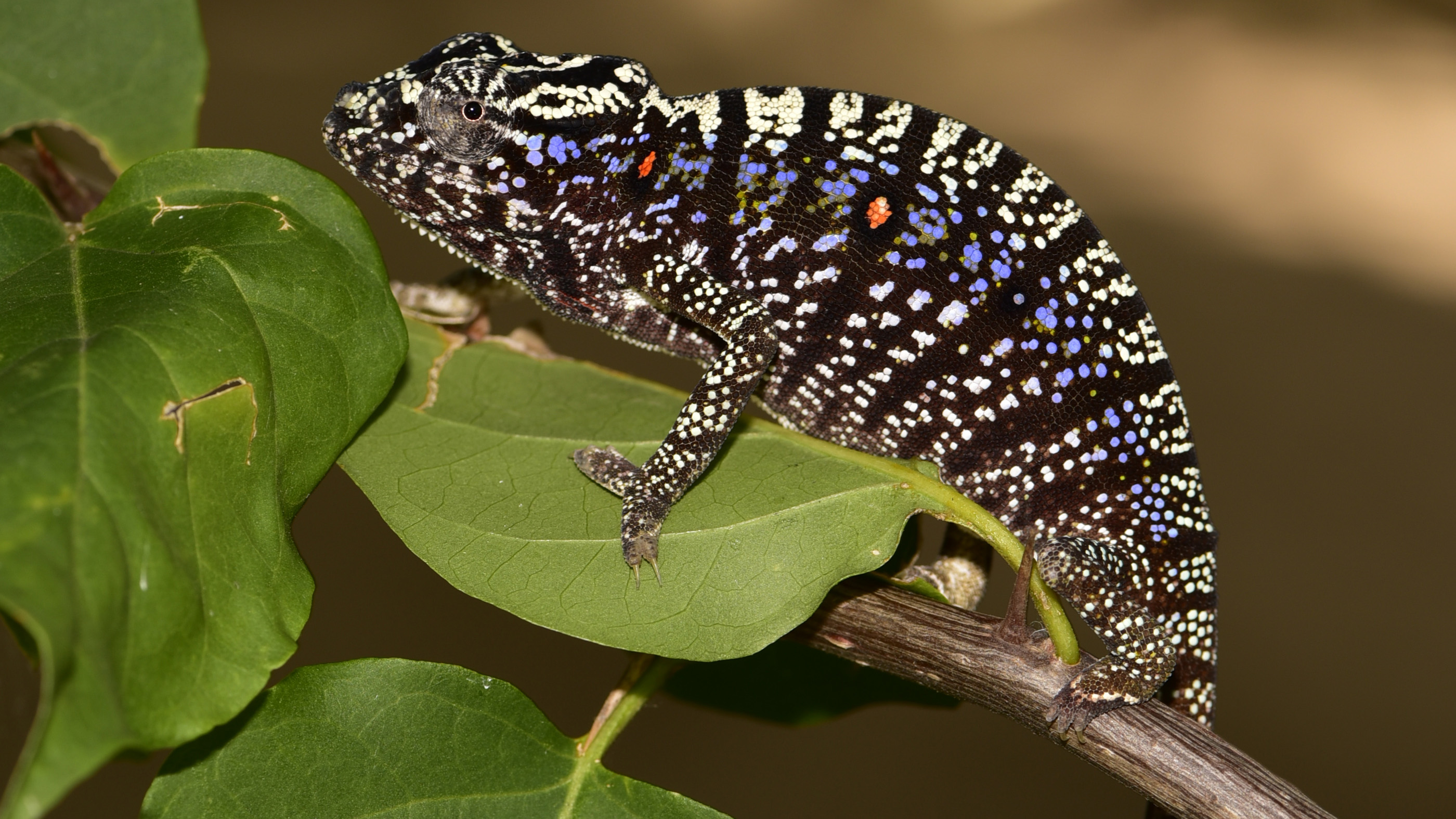
More than a century after it was last seen, a spectacularly colorful chameleon is back. Conservationists announced the rediscovery of the Voeltzkow's chameleon (Furcifer voeltzkowi) on Oct. 30 in the journal Salamandra. The animal, endemic to Madagascar, was last seen in 1913 — and until now, no one had ever seen a female Voeltzkow's chameleon. The females turn out to be a striking sight. They can change colors, and at their most brilliant display a pattern of red dots and a streak of purple against a background of black and white.
Laser wars
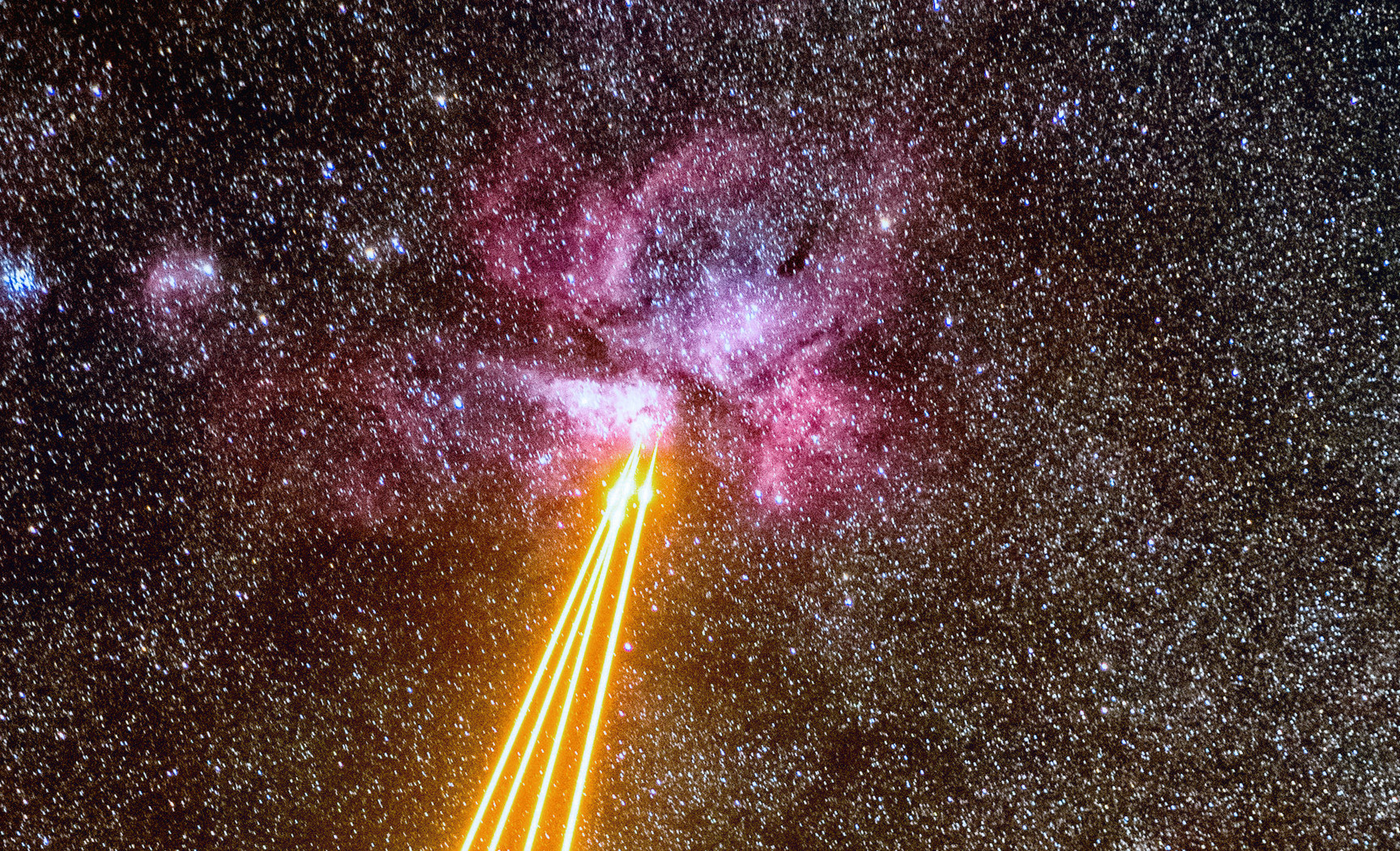
Four orange laser beams blaze through the Milky Way while an angry purple nebula transfixes us with its death-stare. Earth is not doomed; in fact, it's an Earthly telescope that's launching the lasers in this epic image from the European Southern Observatory (ESO). According to the ESO, scientists fire these lasers to simulate distant stars. (Sodium particles in the atmosphere cause the beams to glow orange.) Astronomers then focus on these artificial stars to measure how much the beams are being blurred by Earth's atmosphere, aiding them in future observations of real galaxies.
Losing one's lunch

A snake eel fighting for its life pulled an "alien" move by bursting out of the stomach of a heron that had just swallowed it whole, according to photos snapped by an amateur photographer in Delaware. The photos show the snake eel, its head dangling in midair, as the heron — looking surprisingly unbothered — flies onward. According to Sam Davis, an engineer from Maryland who took the photos on the Delaware shore, several juvenile eagles and a fox were following the heron, possibly hoping to scavenge a meal in case the heron or the snake eel didn't make it.
STEVE's new streaks
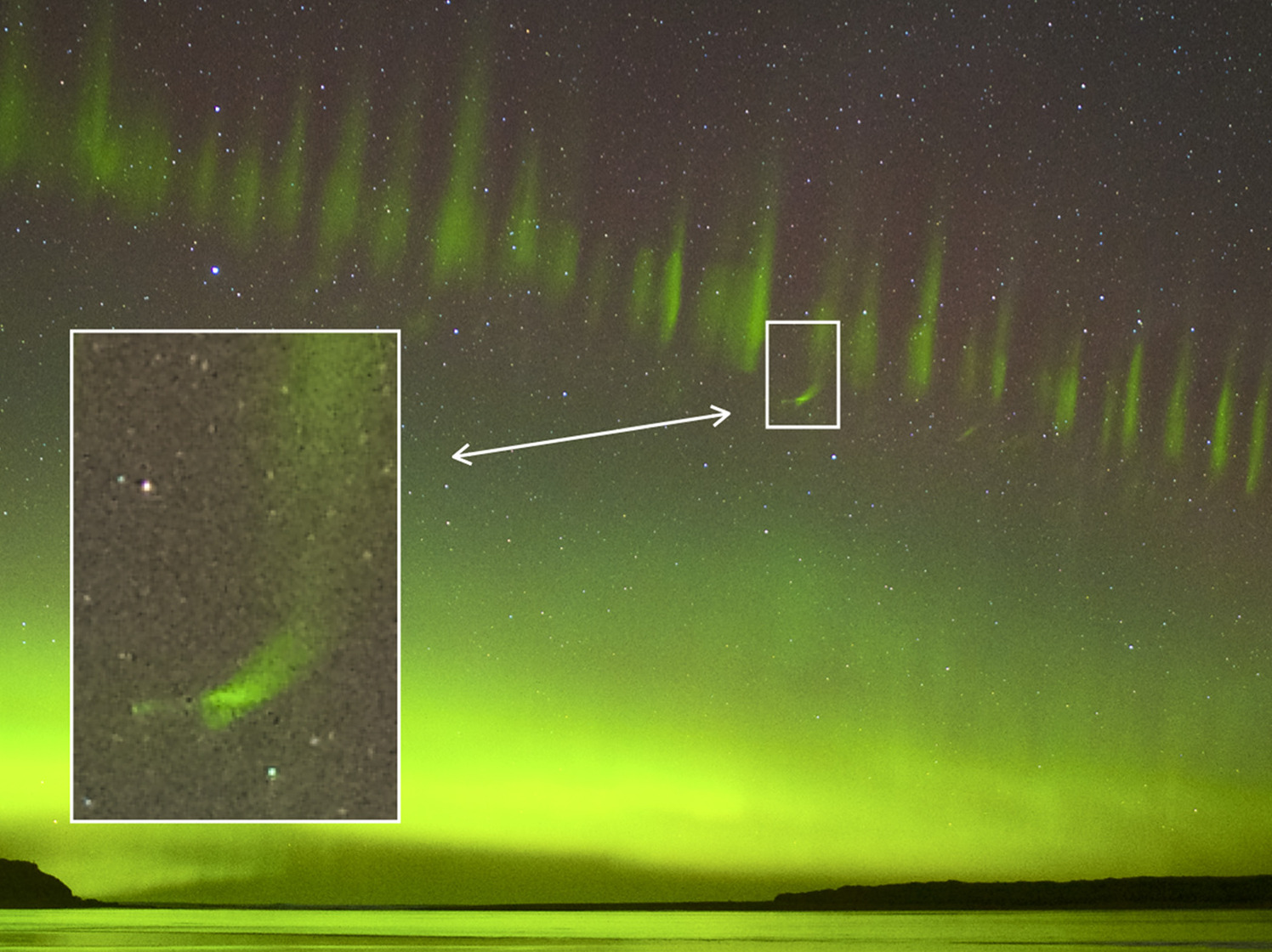
The mysterious, aurora-like phenomenon called STEVE just got a little weirder. In an October study, NASA researchers reviewed hundreds of hours of STEVE footage recorded by citizen scientists to look for a strange new structure they've named "the streaks." These tiny smears of green light are sometimes seen extending horizontally from the bottom of STEVE's green "picket fence" structures, curving backward for about 20 to 30 seconds before vanishing from view. What are the streaks, exactly? As with all things STEVE, nobody really knows.
The painted jungle
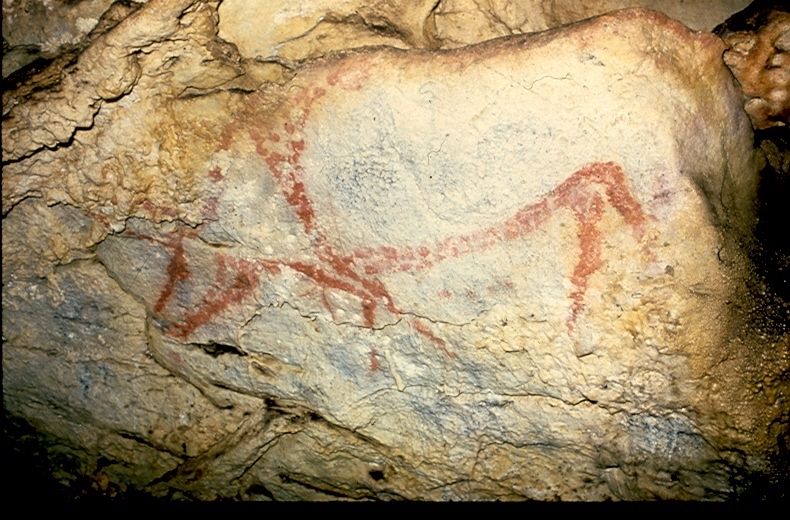
An 8-mile-long "canvas" filled with ice age drawings of mastodons, giant sloths and other extinct beasts was discovered in the Amazon rainforest. The gorgeous art, drawn with ochre — a red pigment frequently used as paint in the ancient world — spans nearly 8 miles (13 kilometers) of rock on the hills above three rock shelters in the Colombian Amazon, a new study found.
Ballooning in the deep
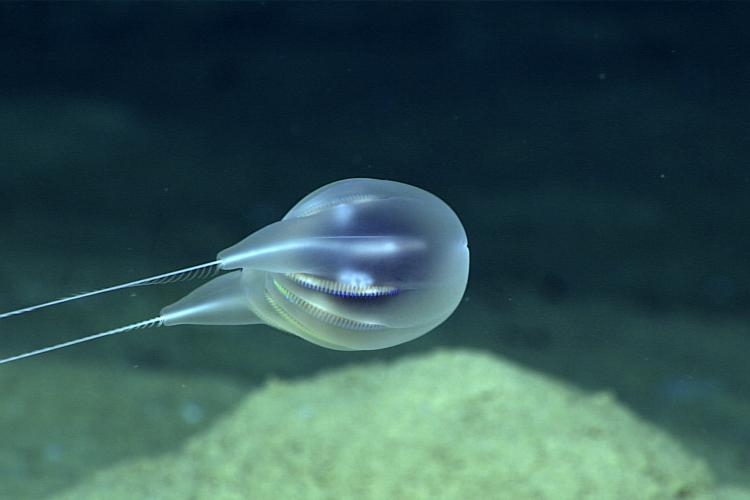
Deep in an underwater canyon off the coast of Puerto Rico, there's a party of balloon-like sea creatures keeping things festive in the abyssal depths. Their bodies are small — about the size of a golf tee (just over 2 inches, or 6 centimeters, long) — but they're vibrant; when the creatures move and pulse, rows of tiny hair-like cilia refract light into a prism of shining colors. Researchers at the National Oceanic and Atmospheric Administration first spotted these mysterious party blobs in 2015. But now, in a paper published Nov. 18, the team has identified the blobs as a new species of ctenophore — tiny invertebrate predators also known as comb jellies or "sea walnuts" — called Duobrachium sparksae.
The end of Arecibo

Gut-wrenching pictures and video documented the beginning of the end for one of the world's most iconic telescopes. The National Science Foundation's Arecibo Observatory in Puerto Rico, known for its studies of asteroids and aliens and for its cameo in a James Bond film, collapsed on Dec. 1. The 900-ton platform that hung above the radio dish fell 450 feet (140 meters) into the structure below around 8 a.m. local time, causing massive damage documented online.
The sky is falling

Have you ever seen 40,000 shooting stars blaze across the sky at the same time? Now you can. In a new ESA simulation, 40,000 stars — all located within 325 light-years of Earth's sun — whiz through space, leaving long trails of light behind them. Each point of light represents one real object in the Milky Way, and each shining trail shows that object's projected movement through the galaxy over the next 400,000 years. Brighter, faster streaks are located closer to our solar system, while dimmer, slower ones live much farther away.
Clear heads, nine arms, can't lose

A nine-armed octopus caught off Japan's coast nearly ended up being dinner, until the family preparing it noticed its extra limb and sent it to a museum instead, according to news sources. While unusual, this extra appendage — which wasn't fully formed, but a small offshoot on a regular arm — isn't unheard of in octopuses. Octopuses are capable of regenerating their arms, but sometimes regeneration doesn't work quite right; If an arm gets damaged, it might regenerate wrong, ending up with extra tissue growing out that becomes an arm, researchers told Live Science.
Originally published on Live Science.

Brandon is the space/physics editor at Live Science. His writing has appeared in The Washington Post, Reader's Digest, CBS.com, the Richard Dawkins Foundation website and other outlets. He holds a bachelor's degree in creative writing from the University of Arizona, with minors in journalism and media arts. He enjoys writing most about space, geoscience and the mysteries of the universe.









